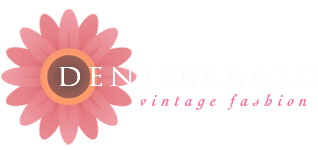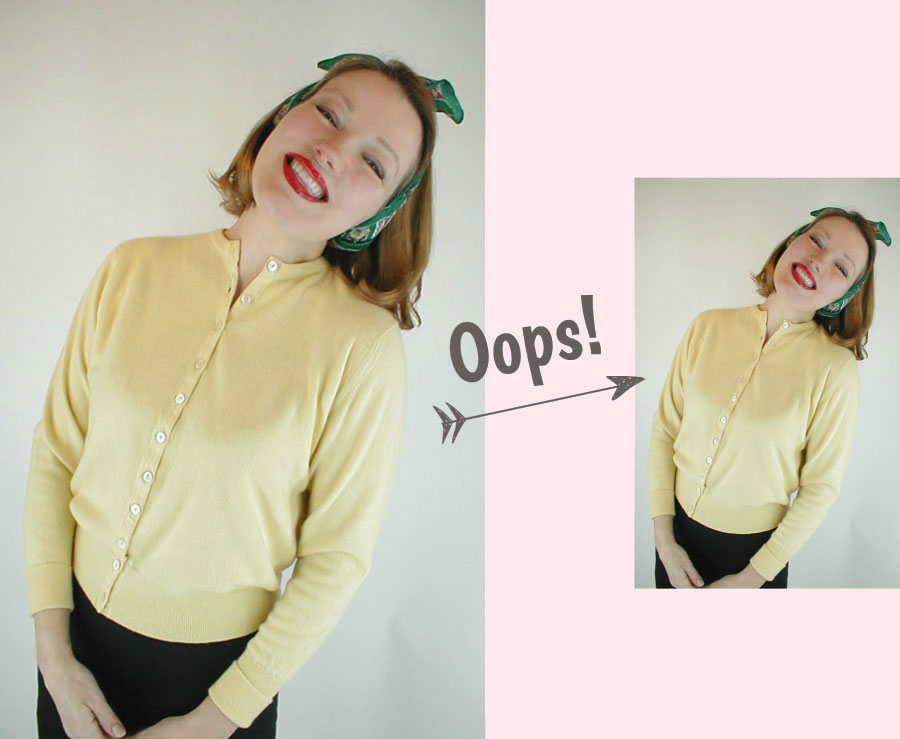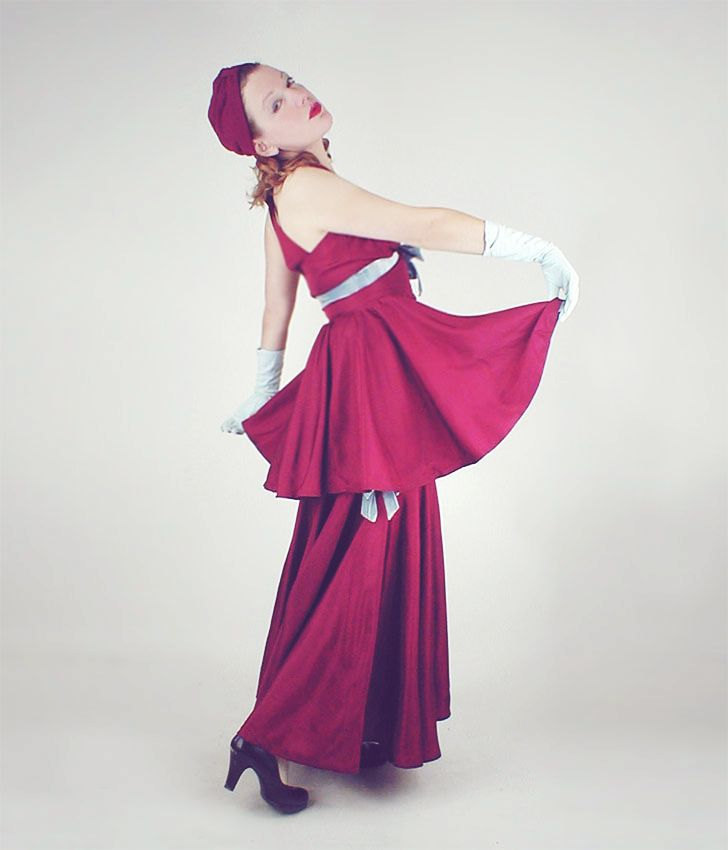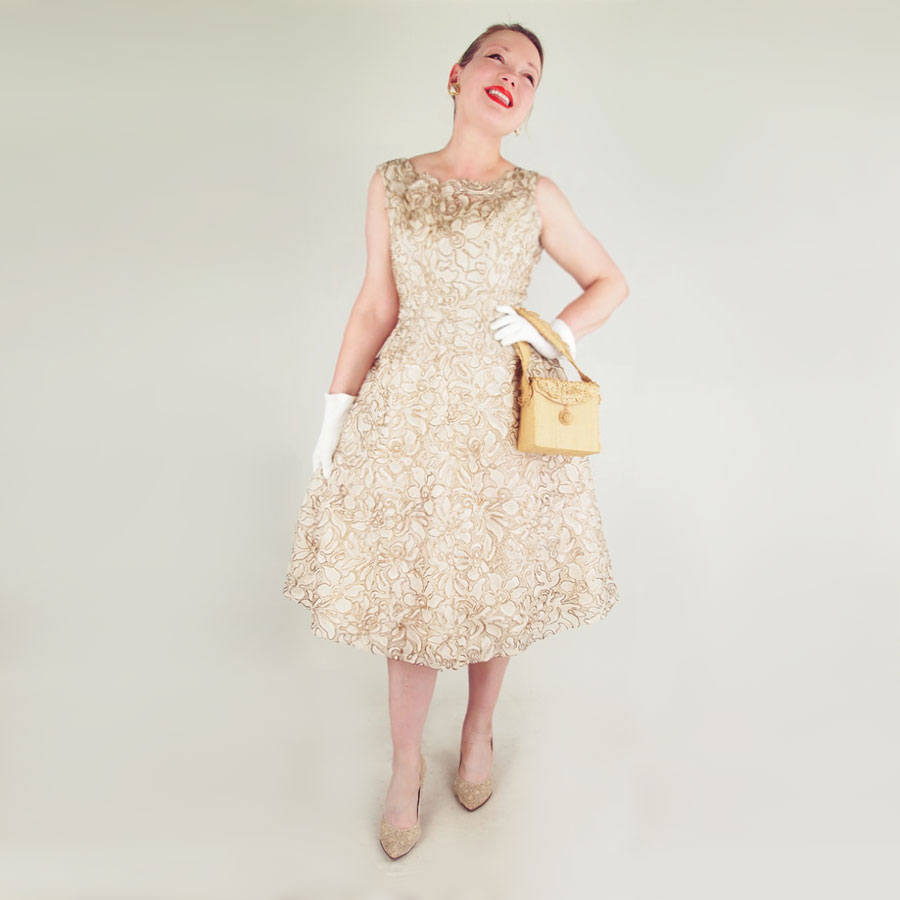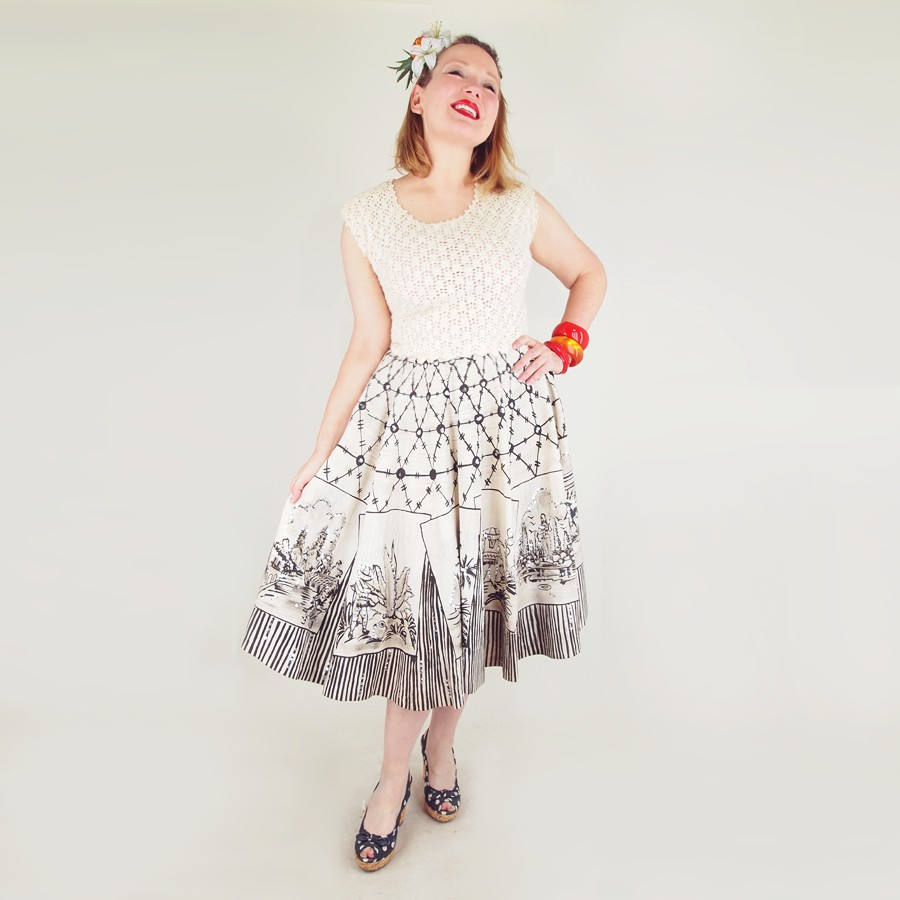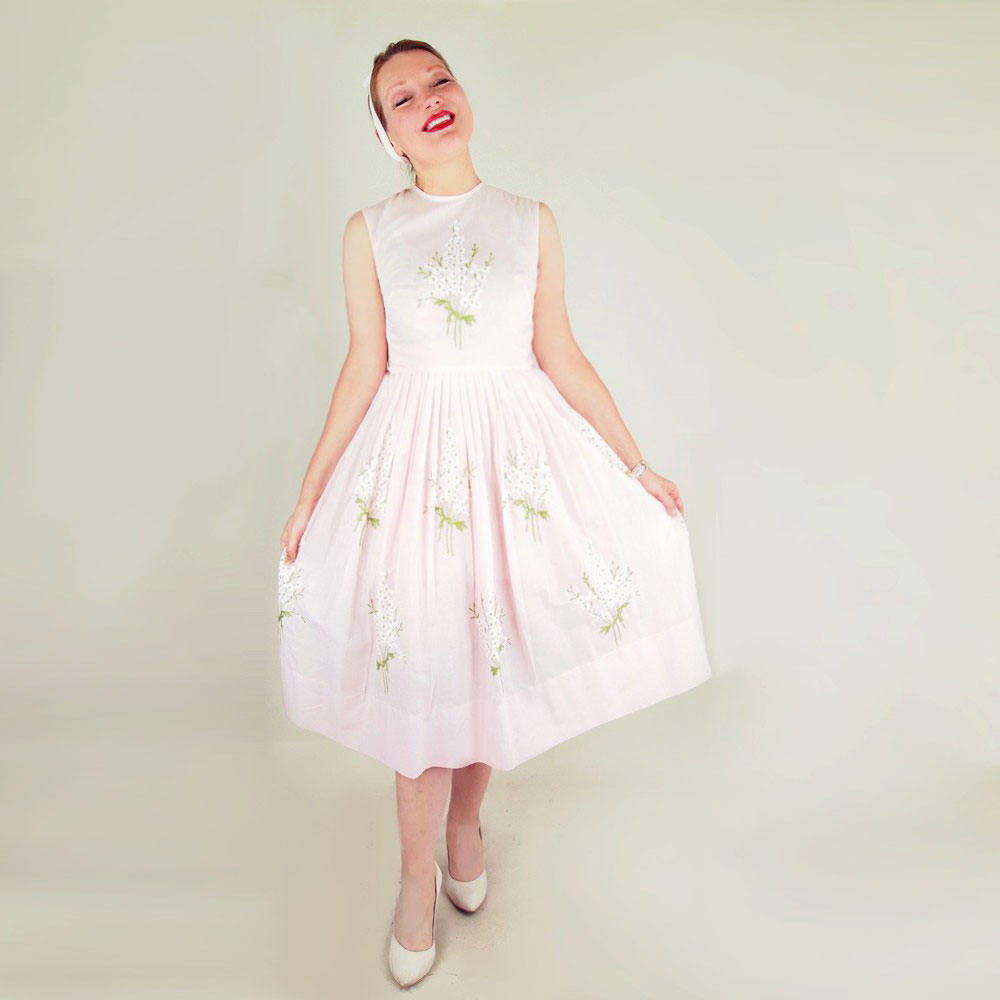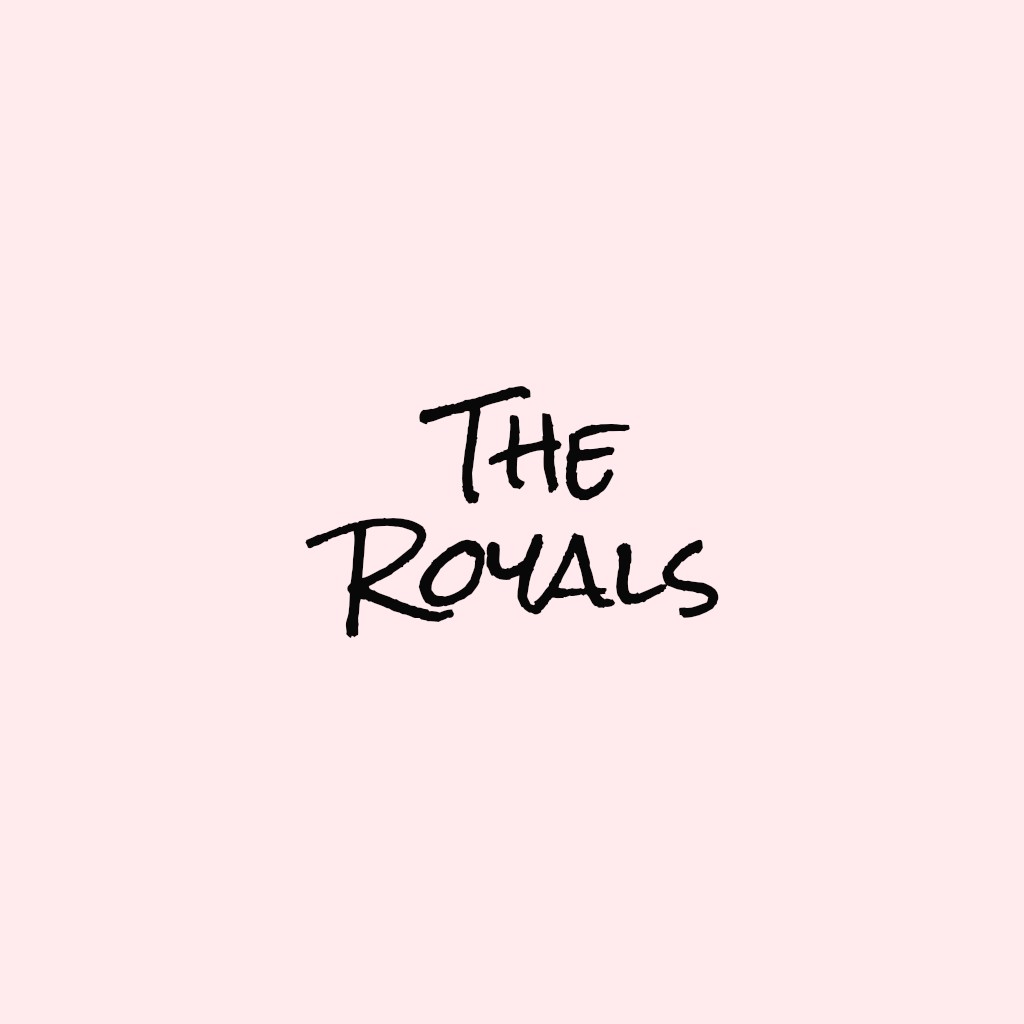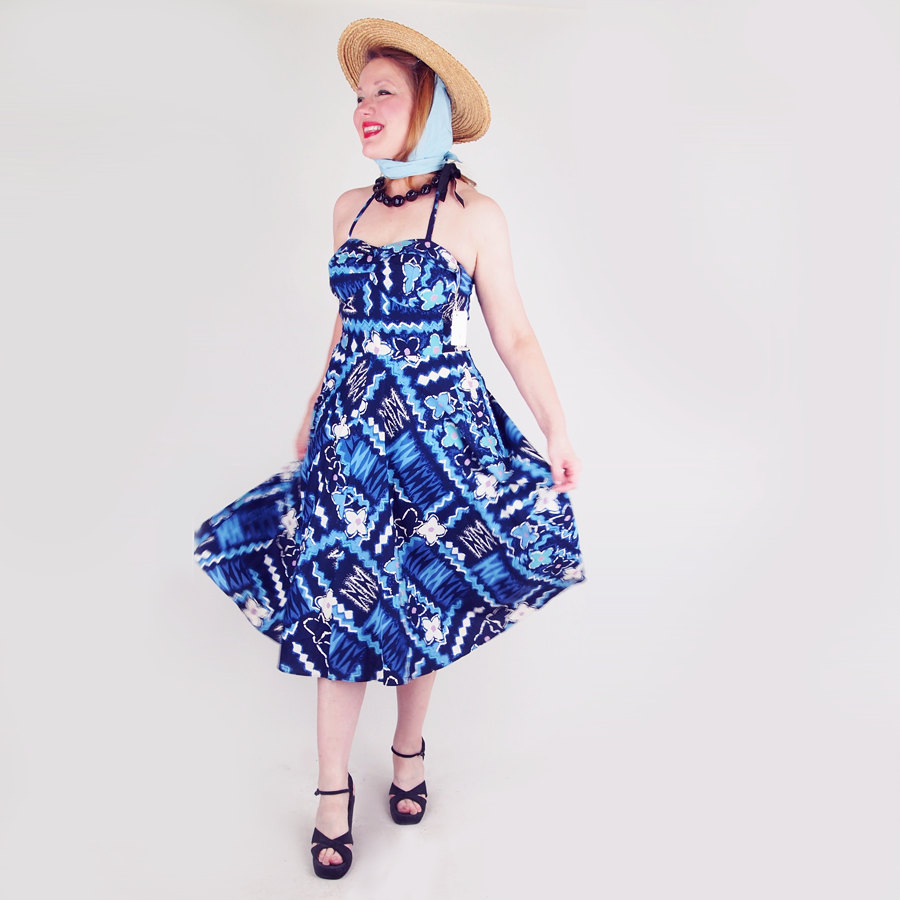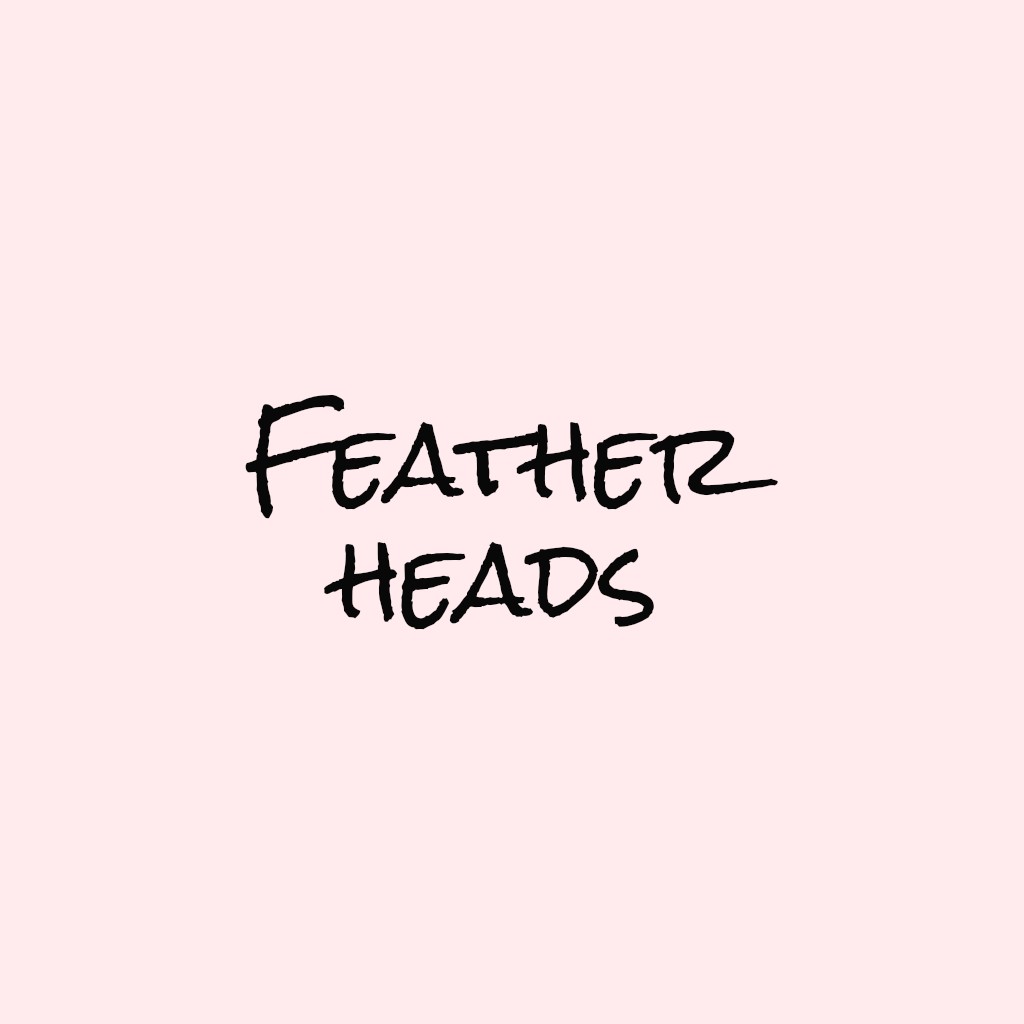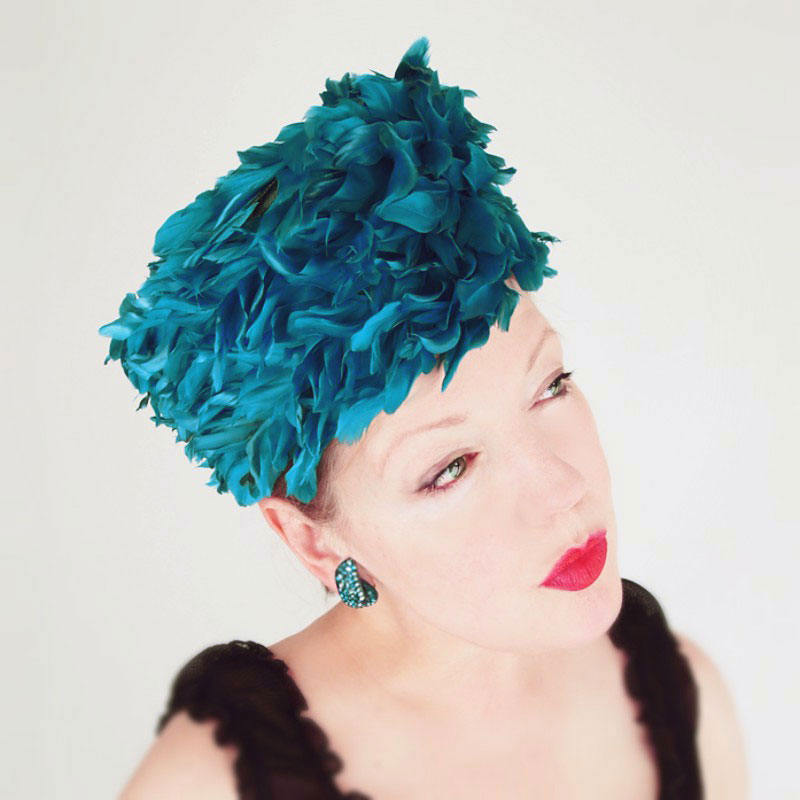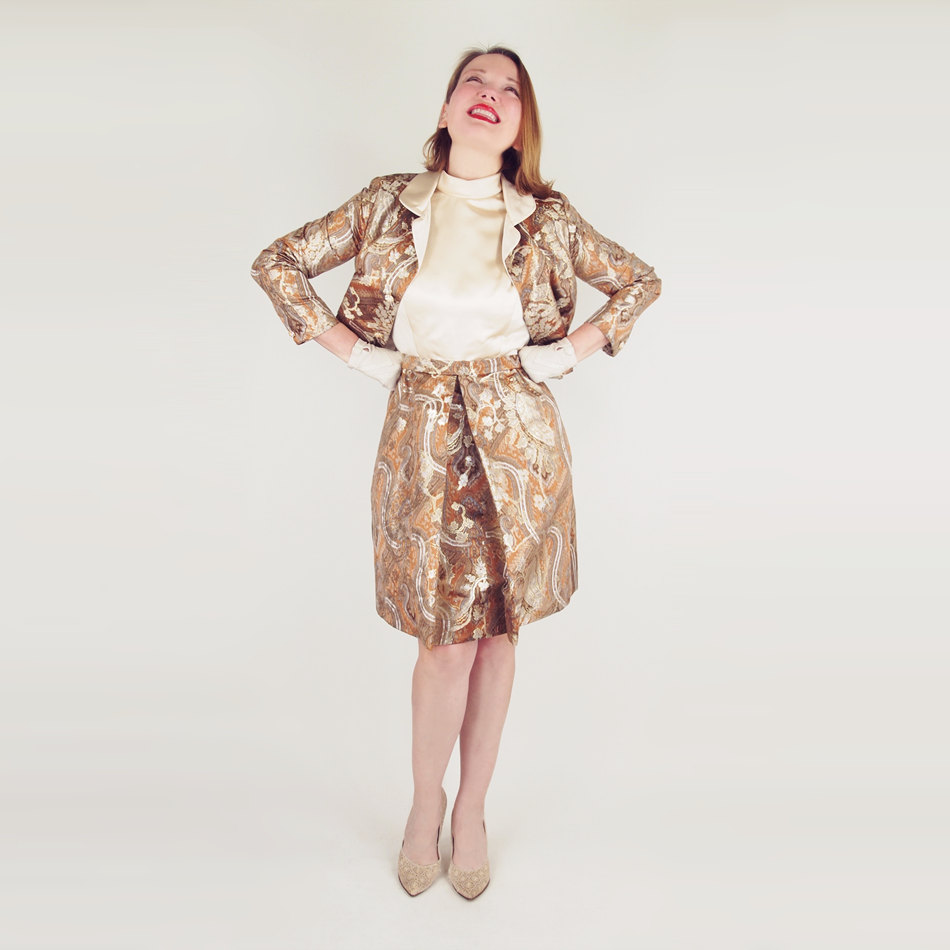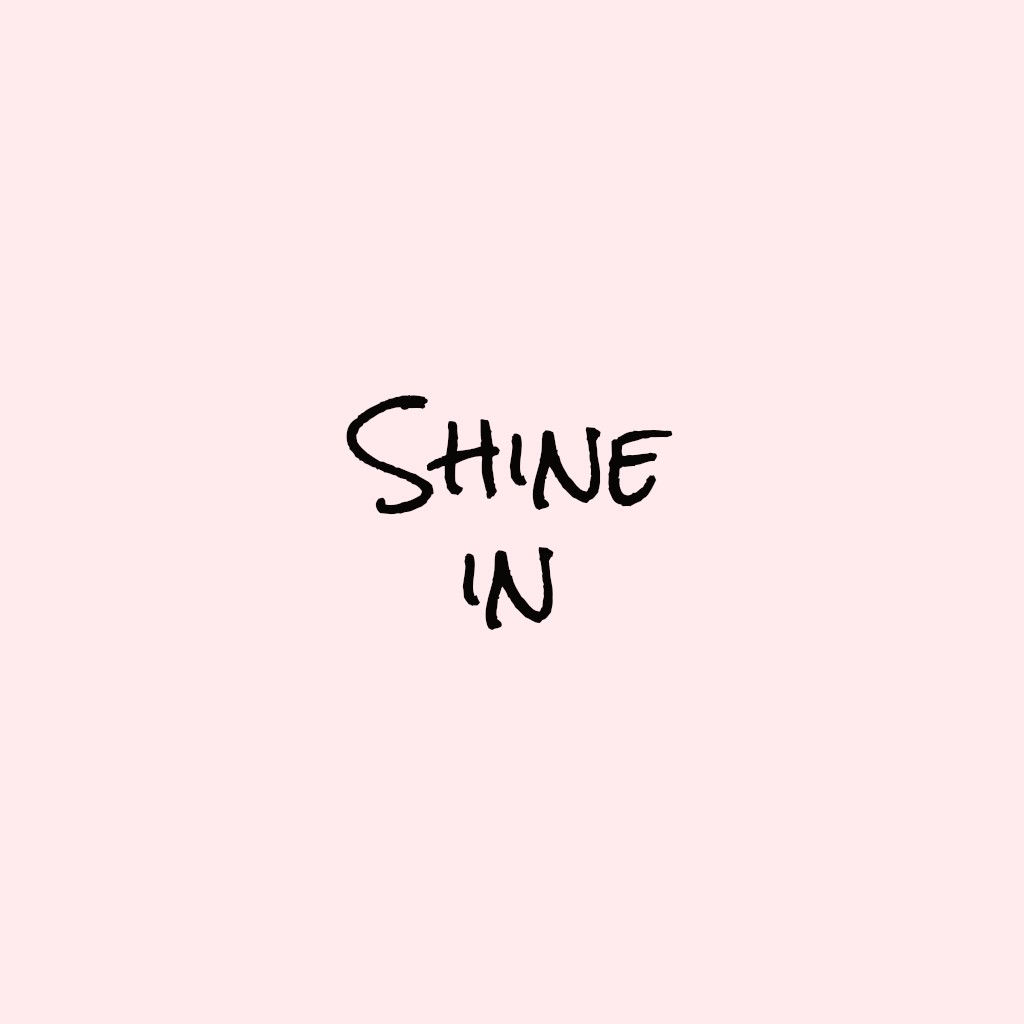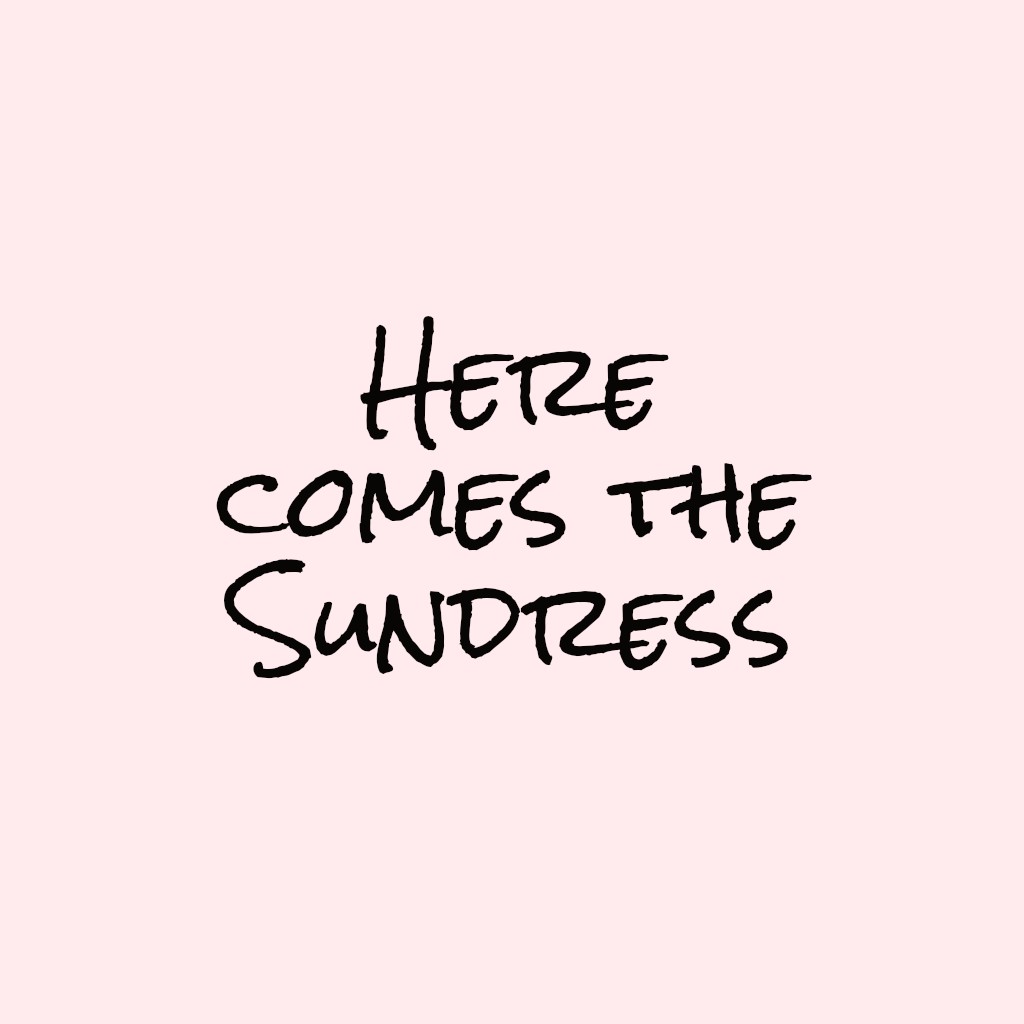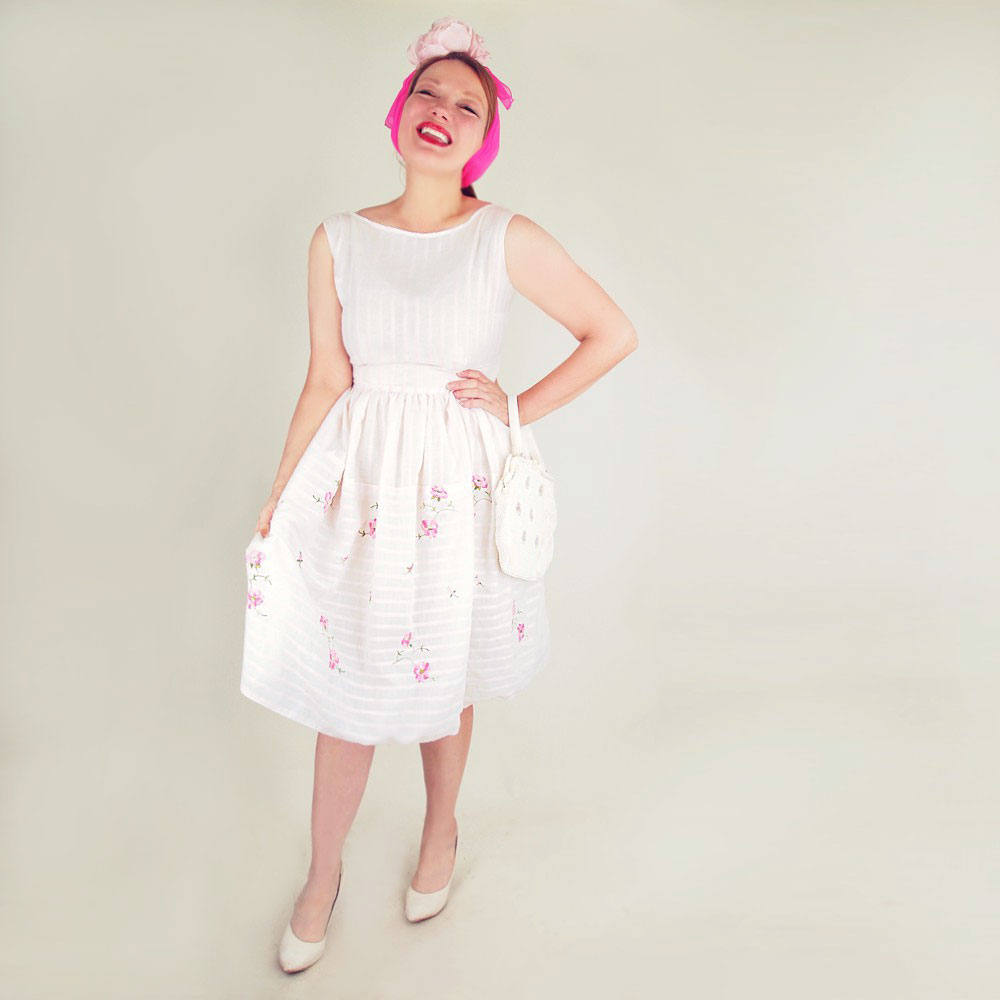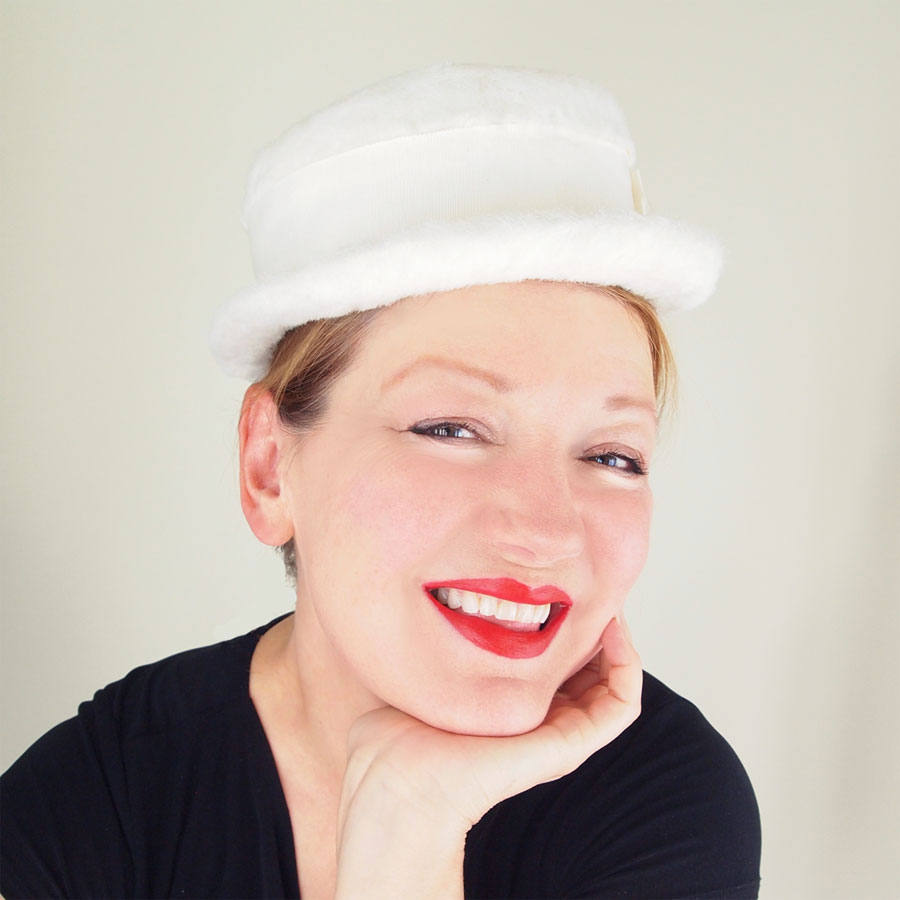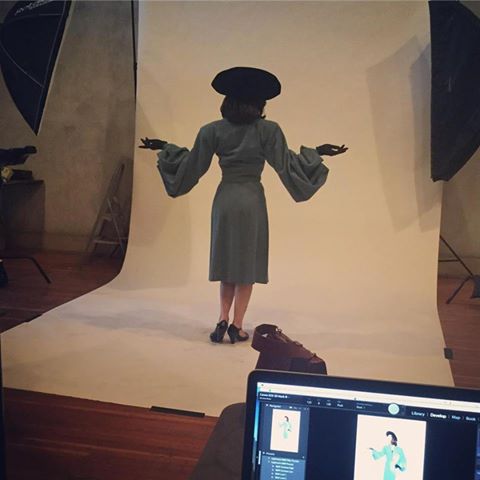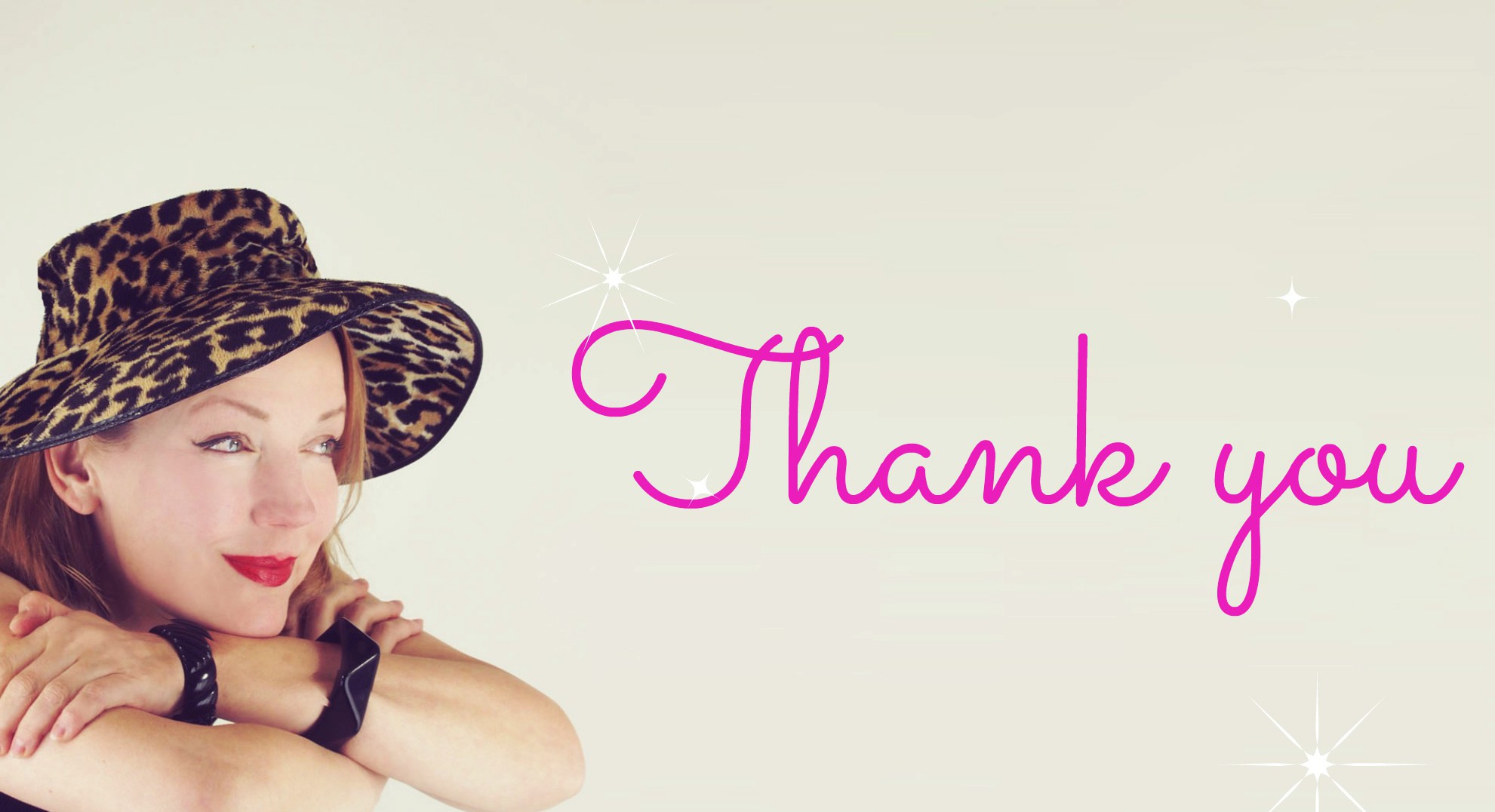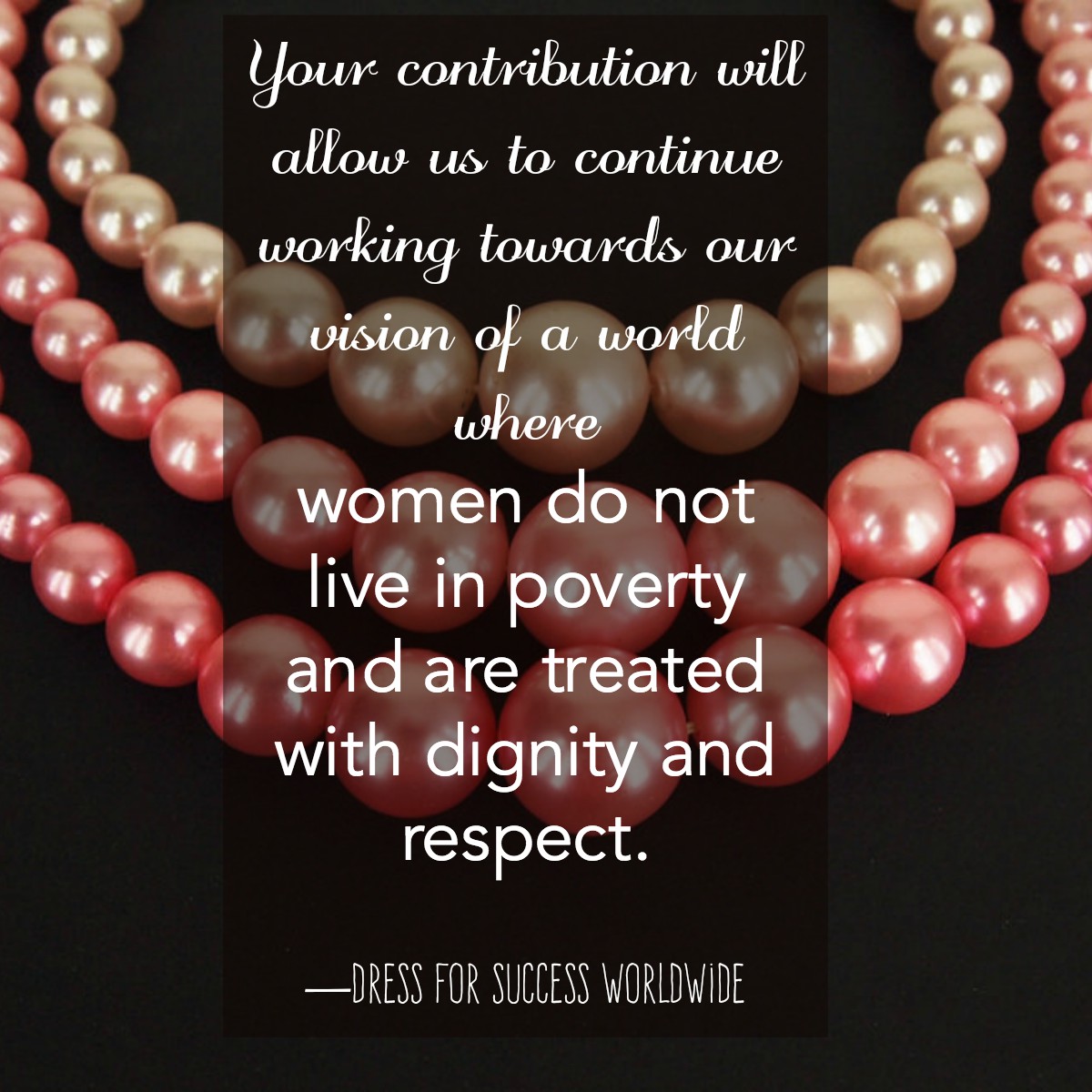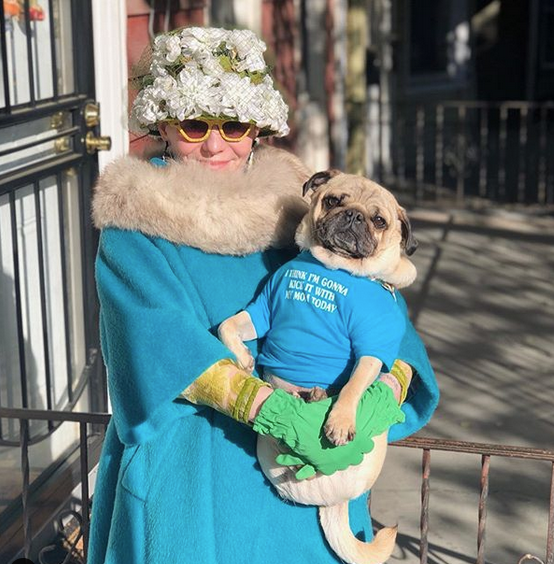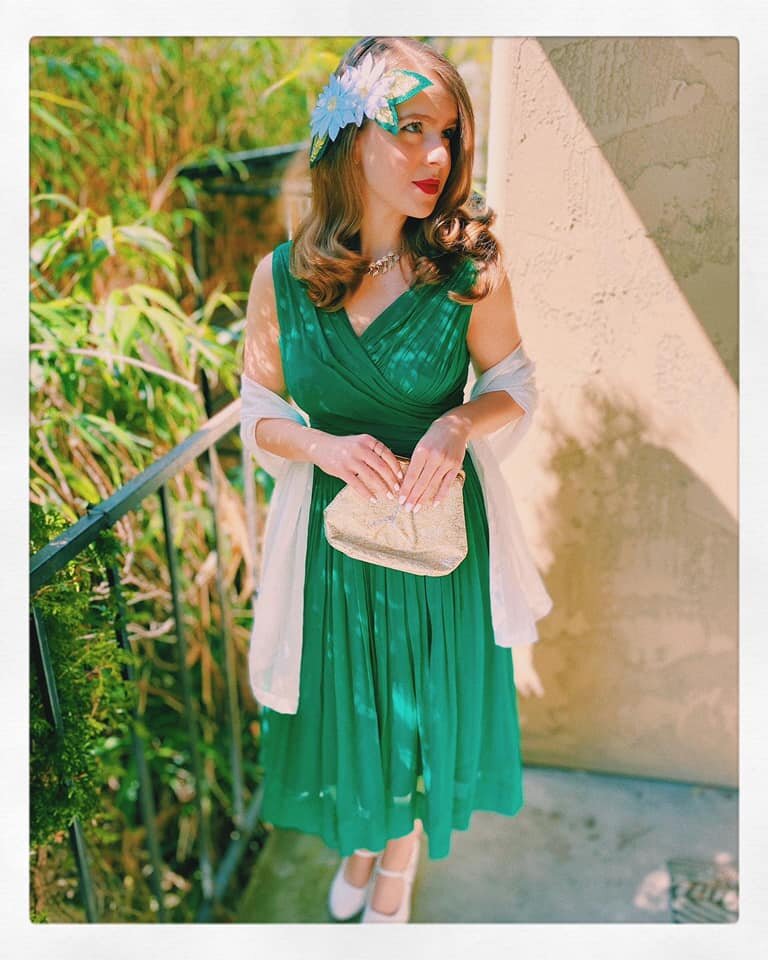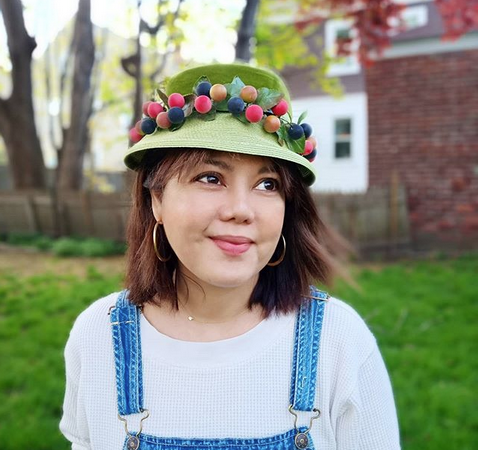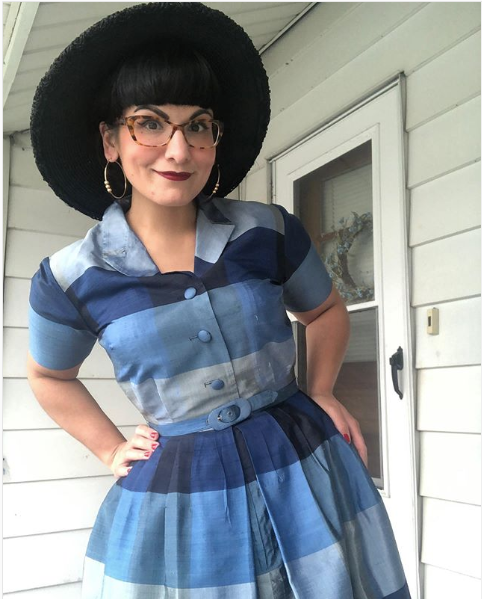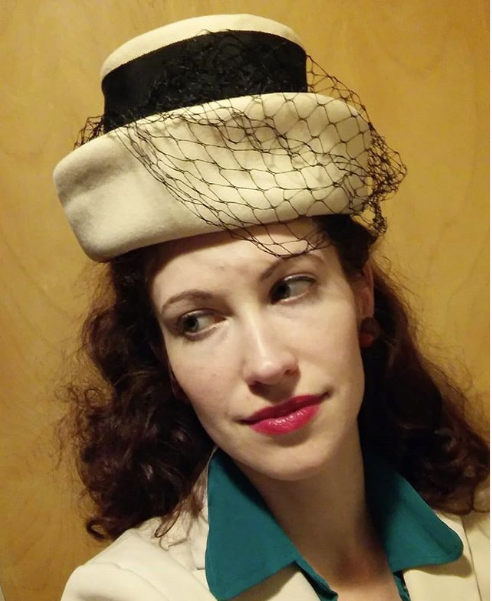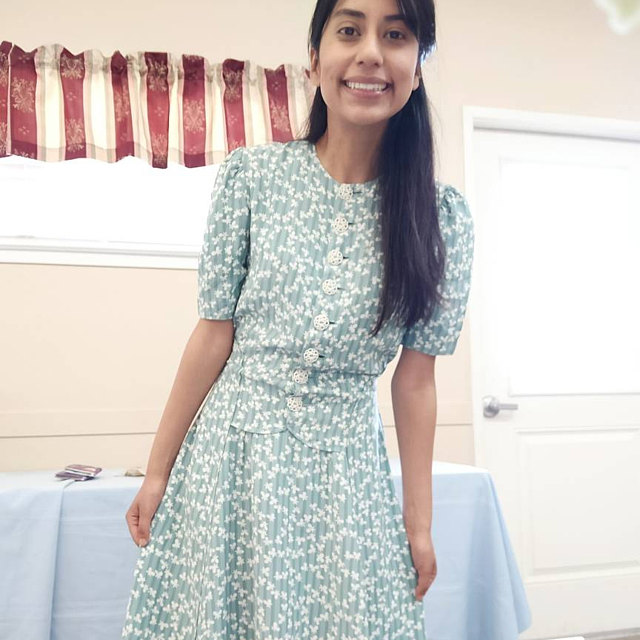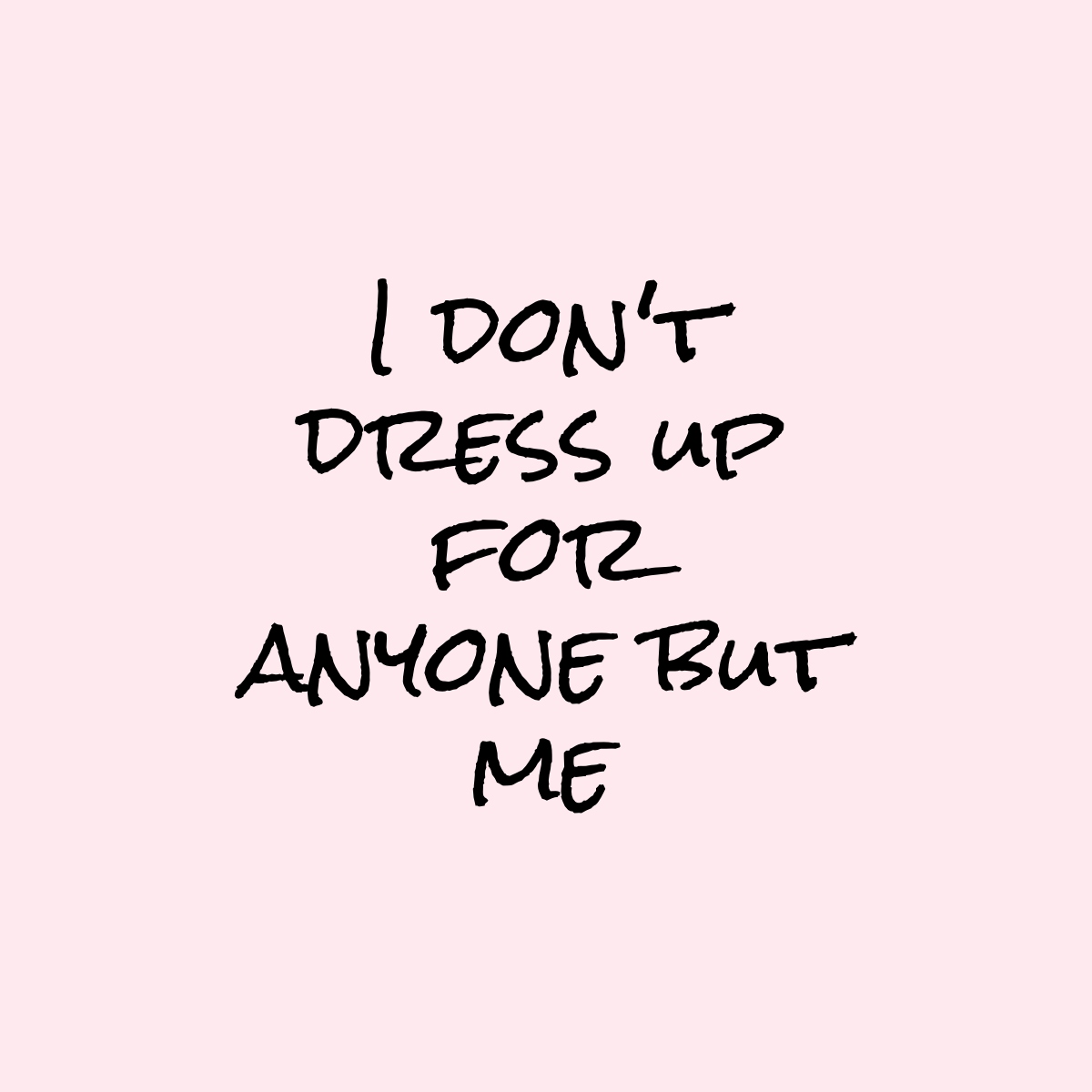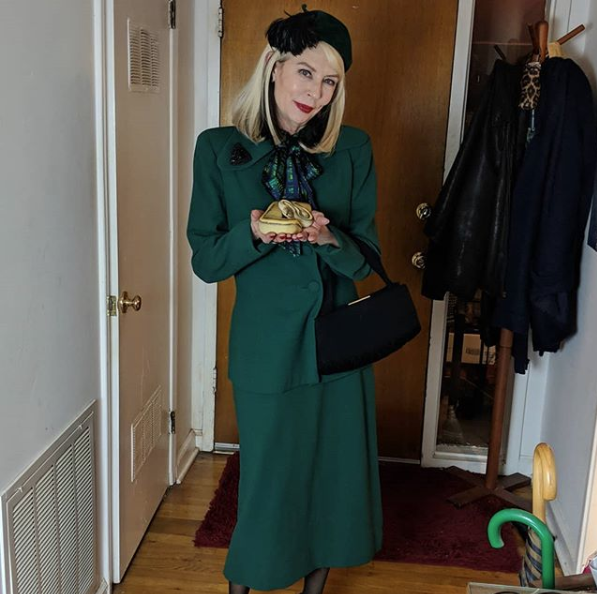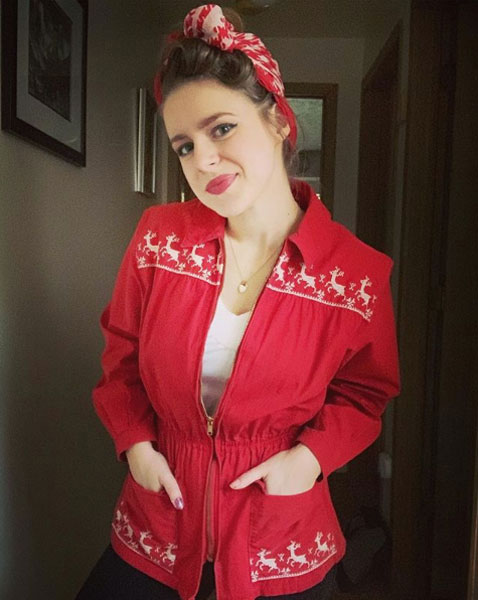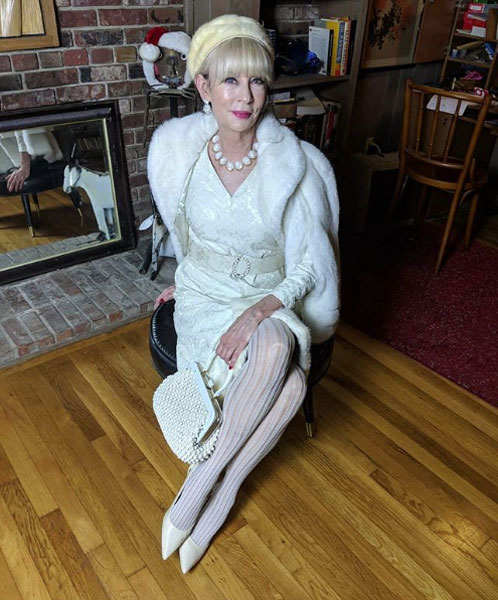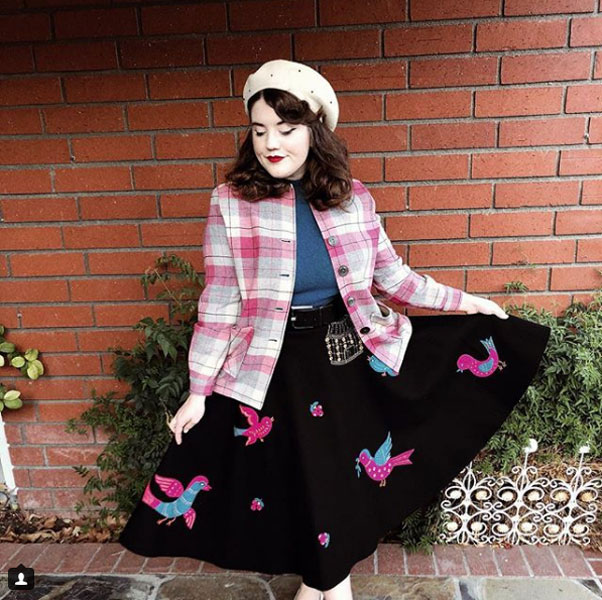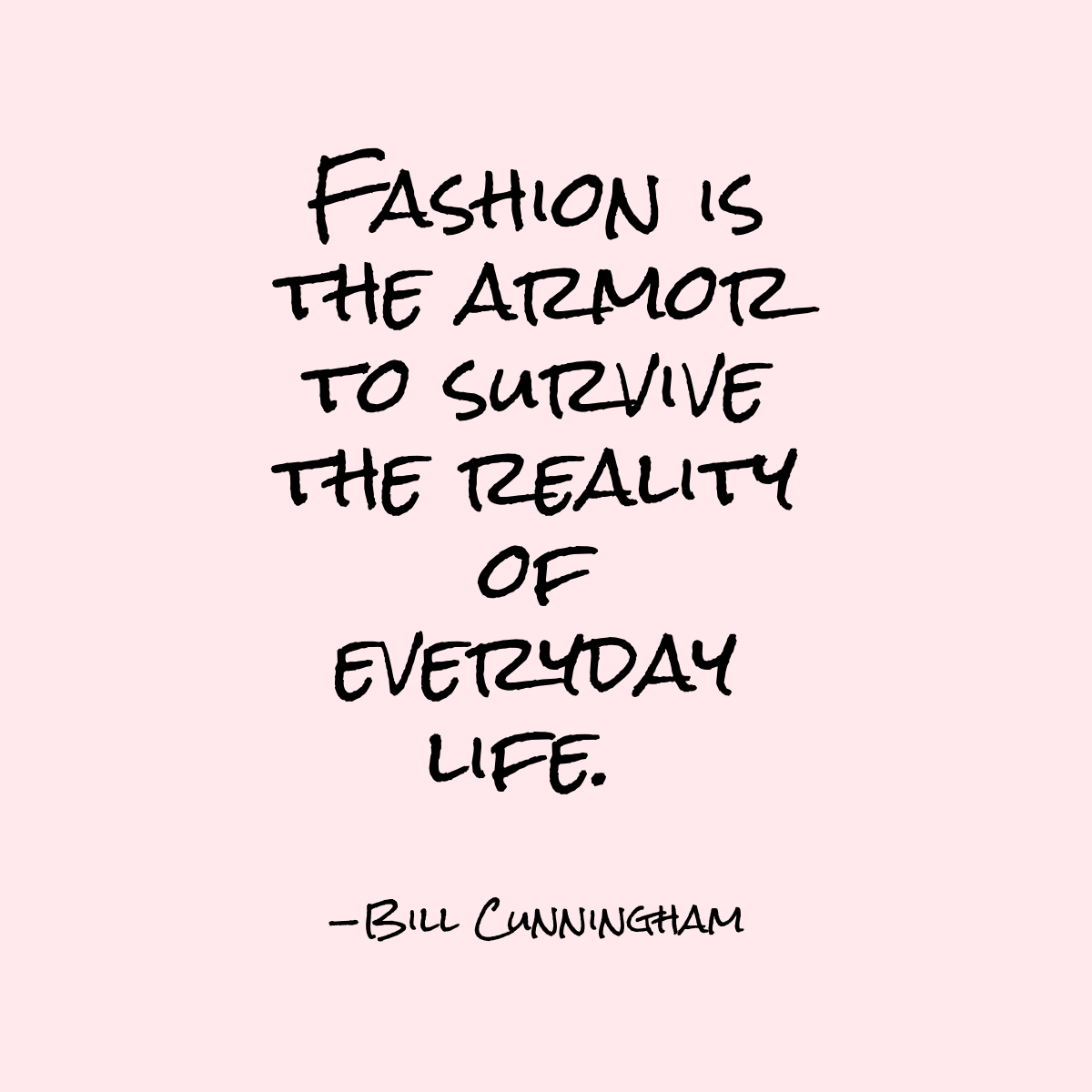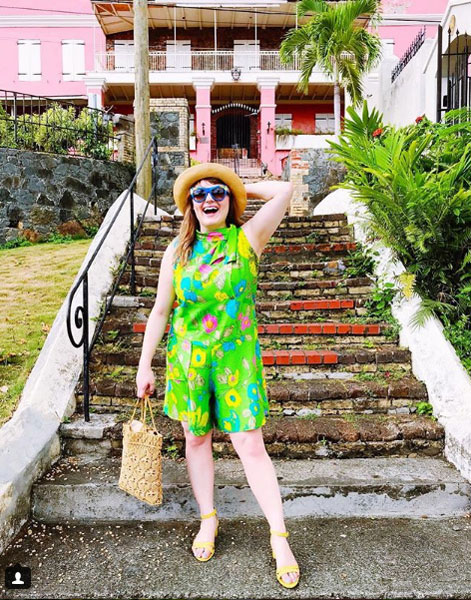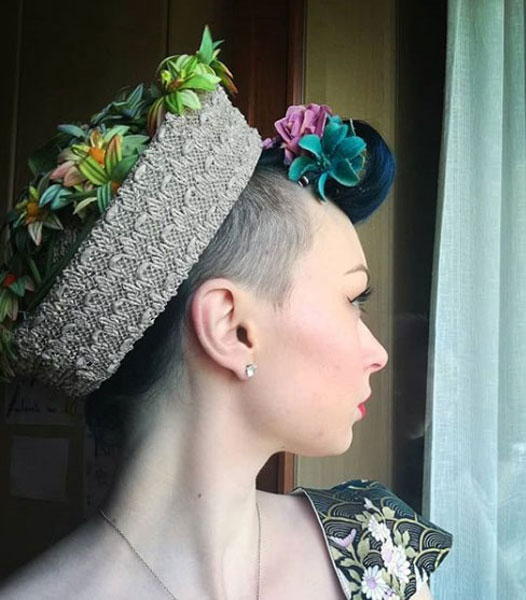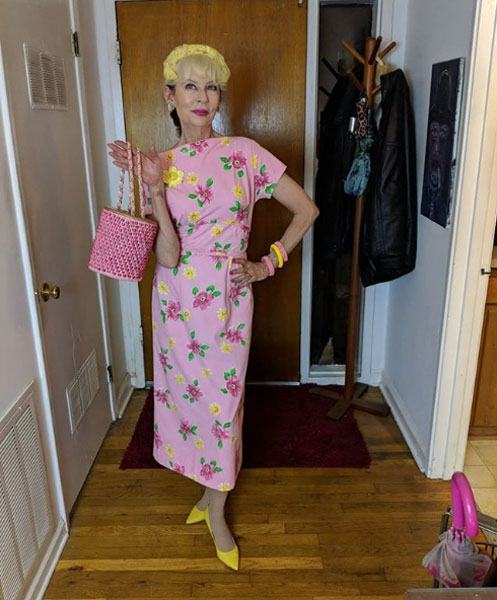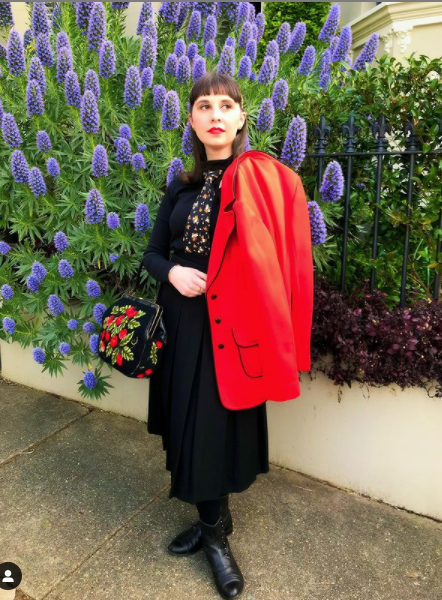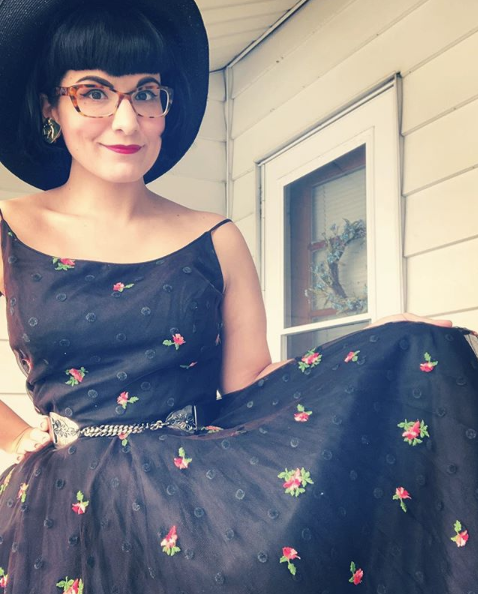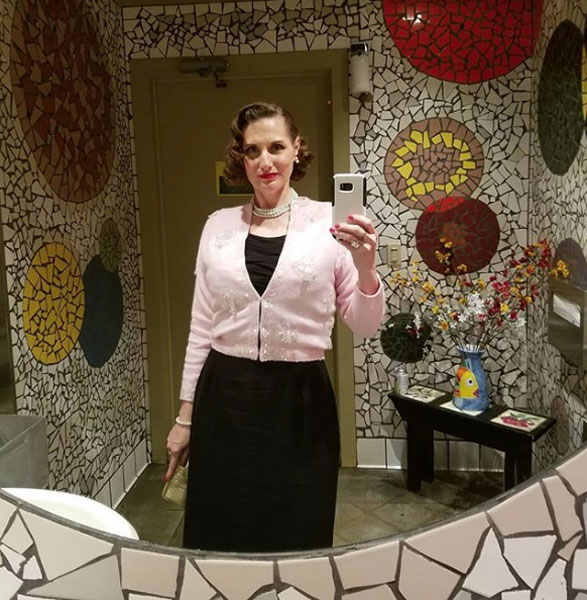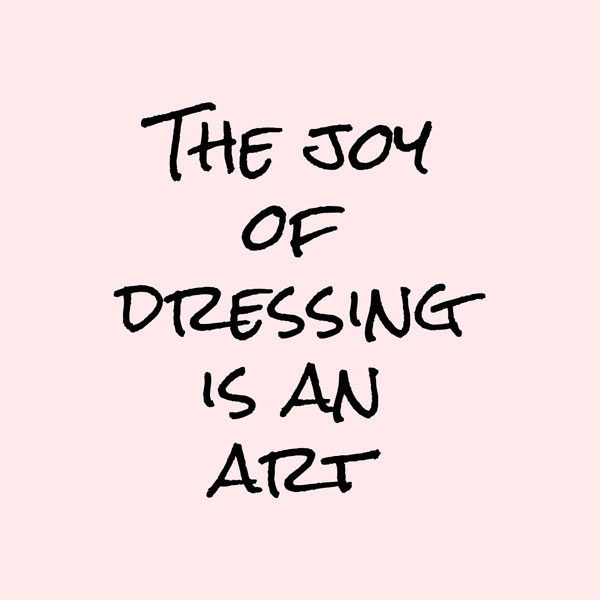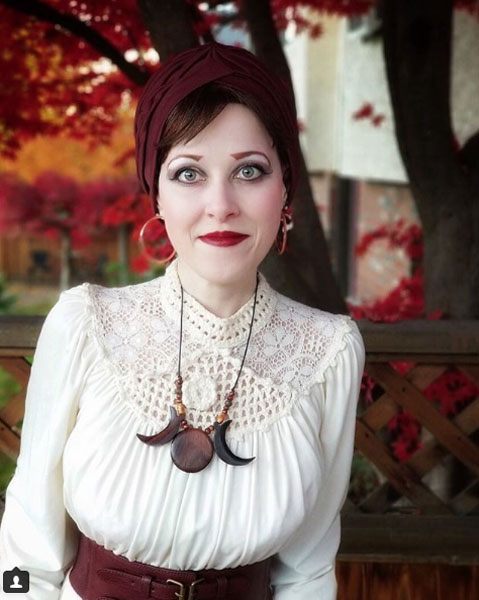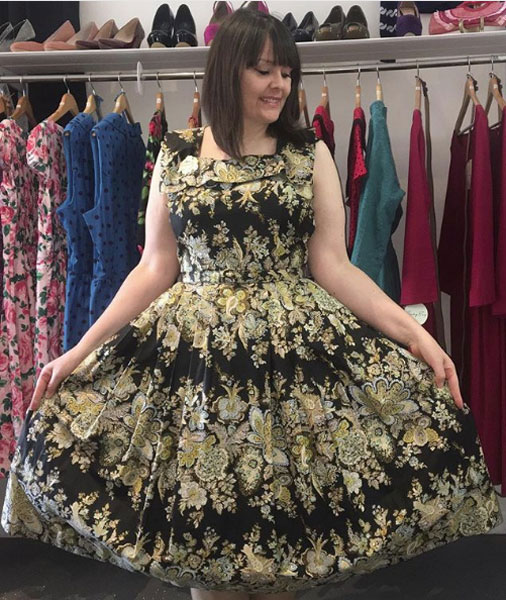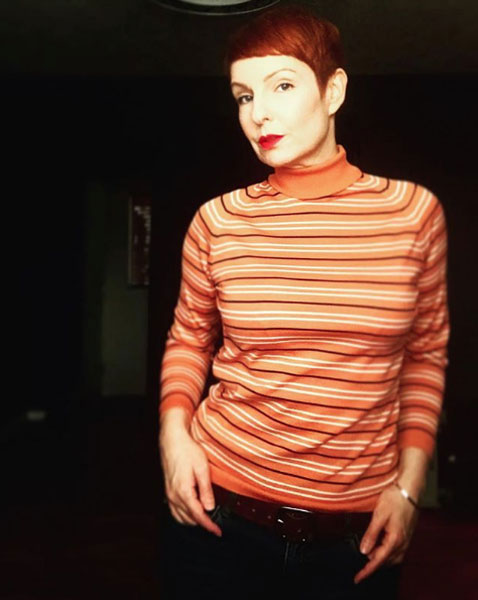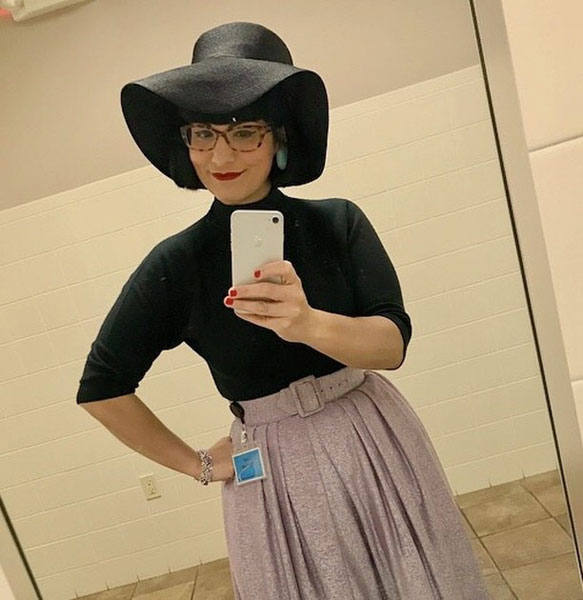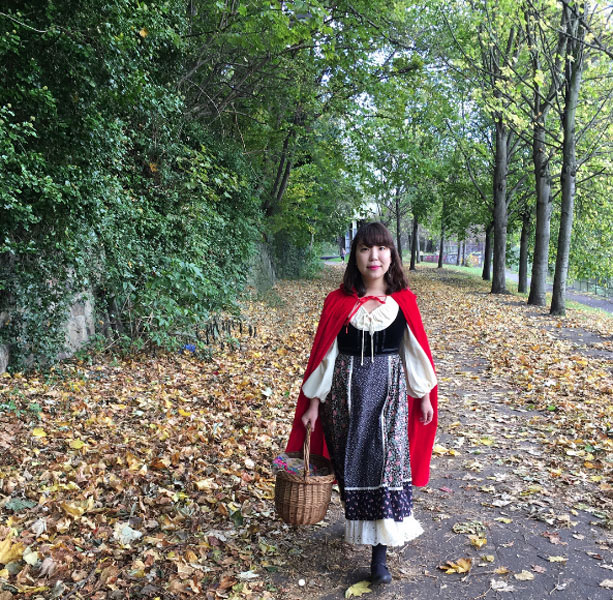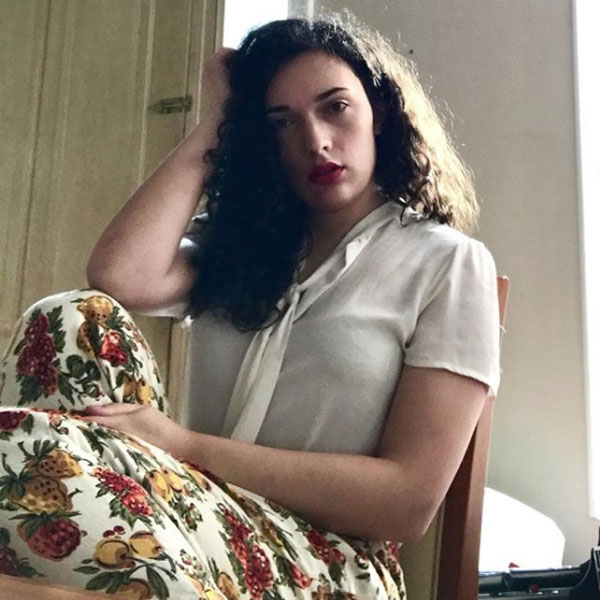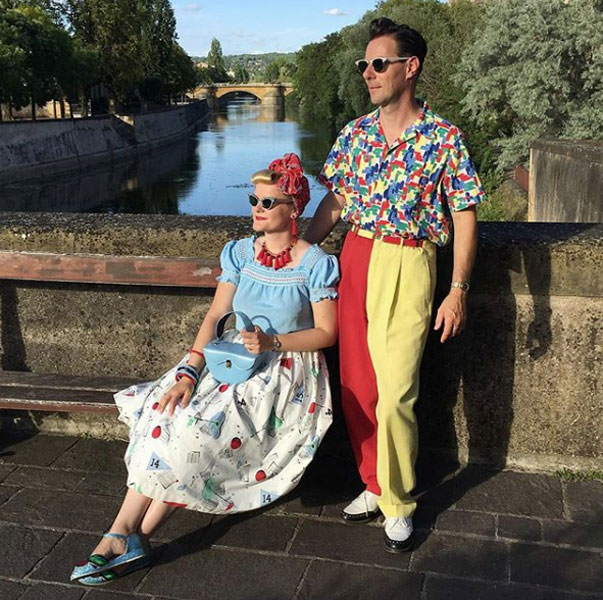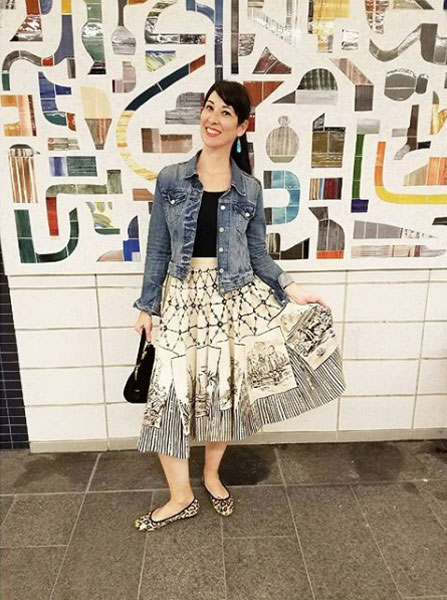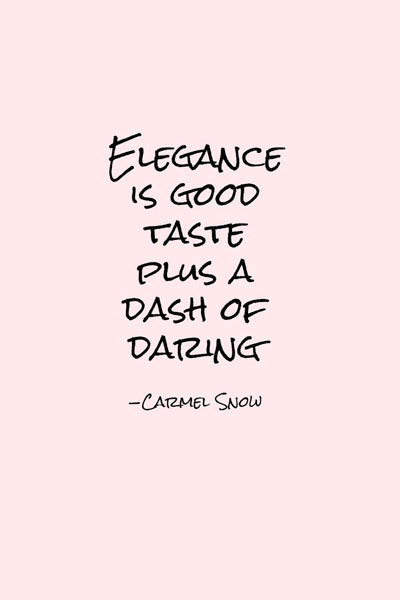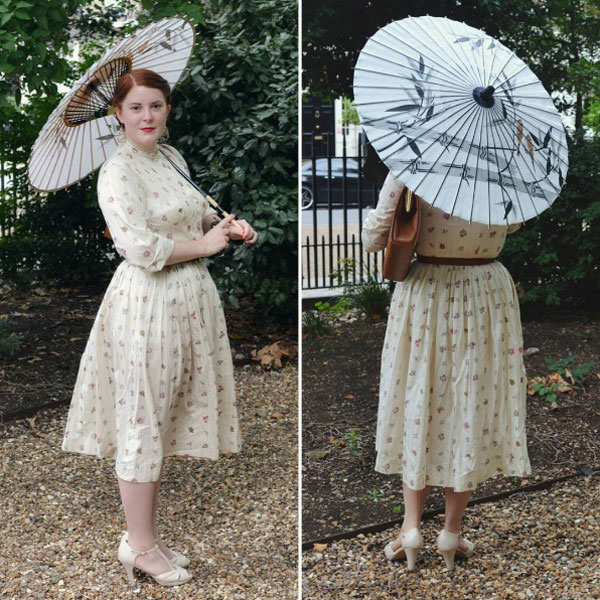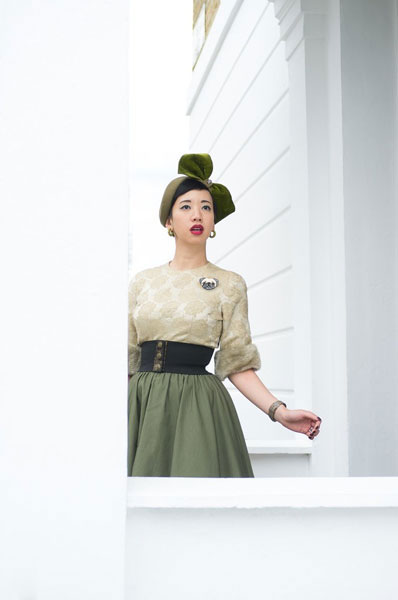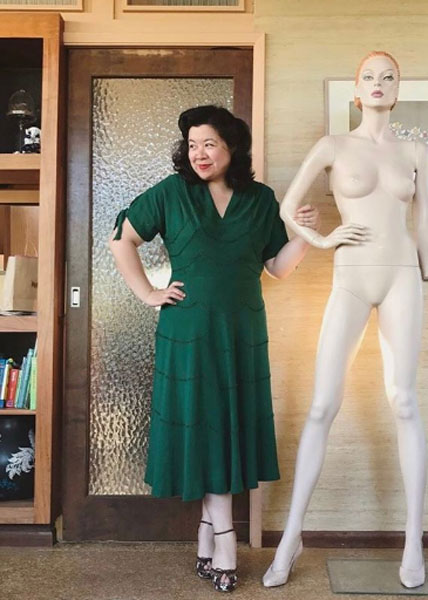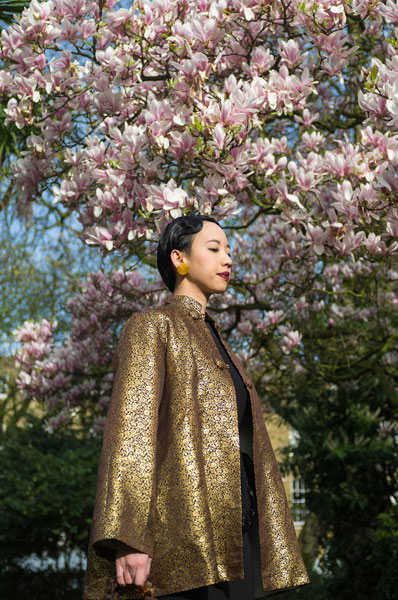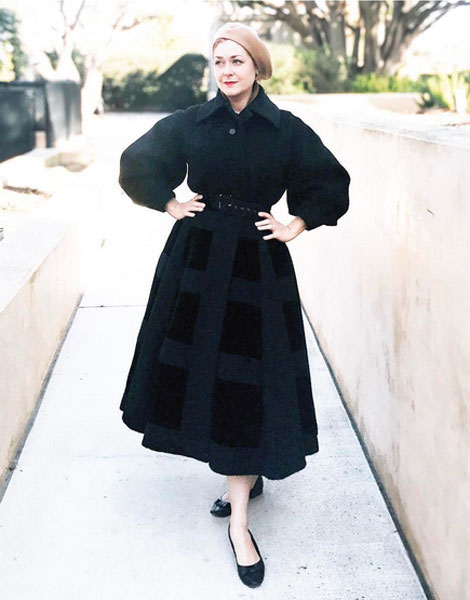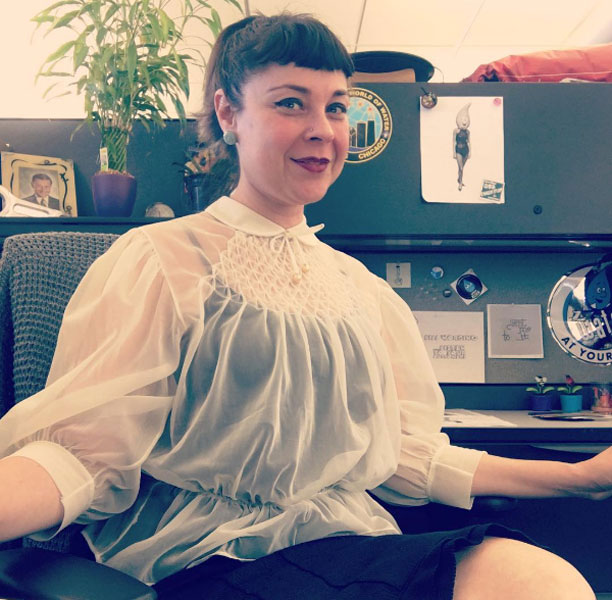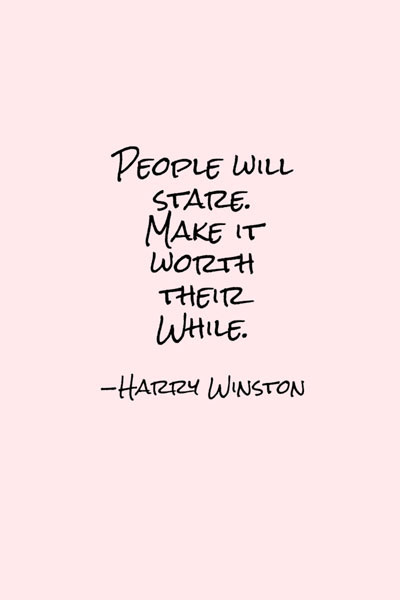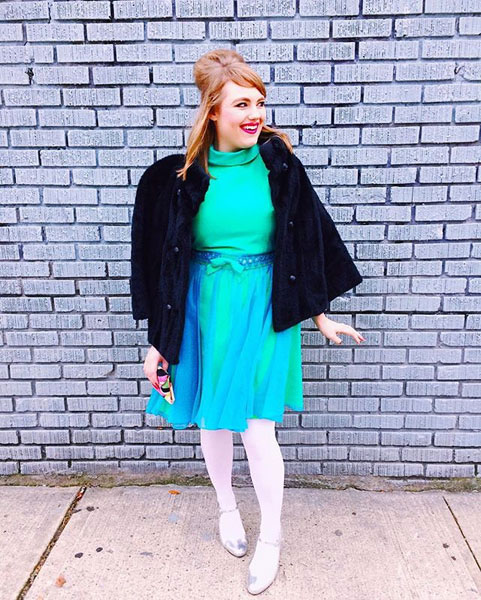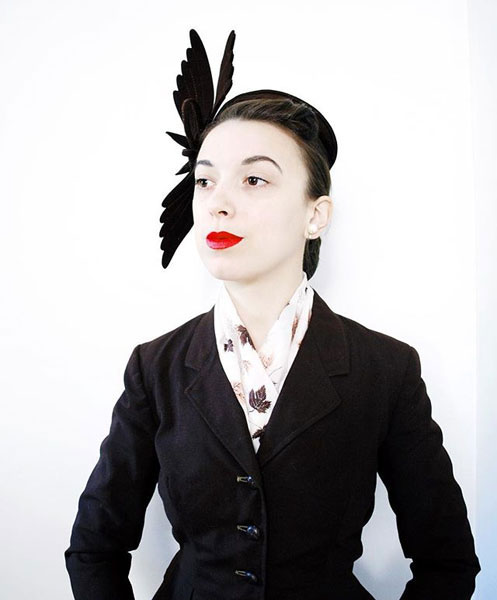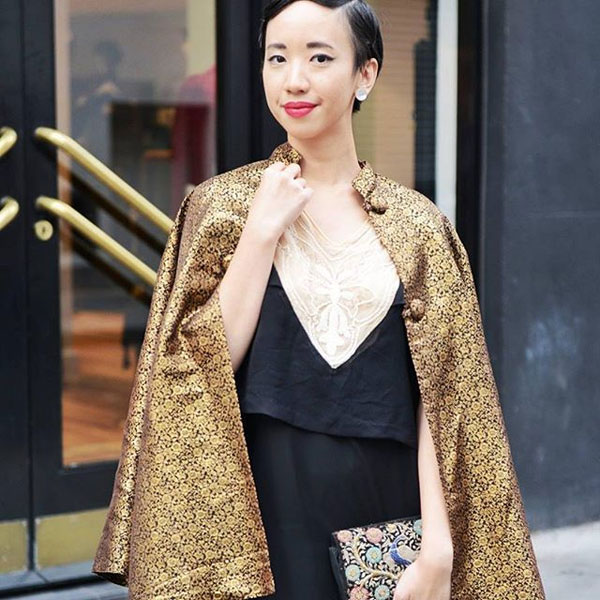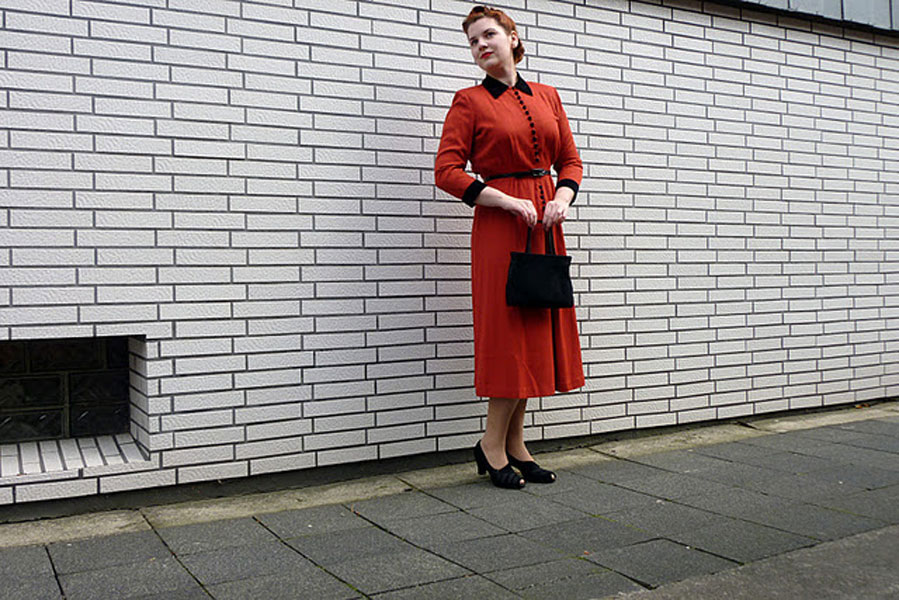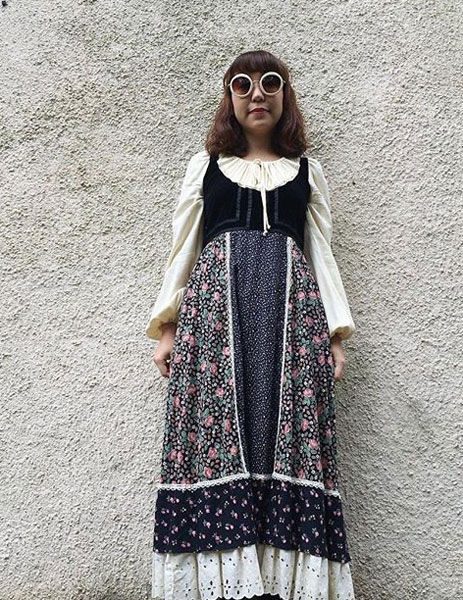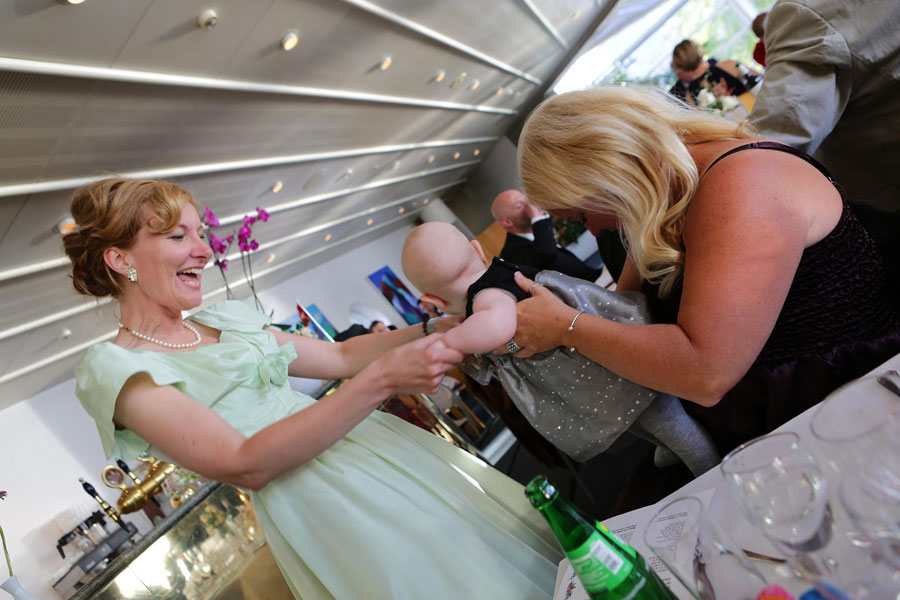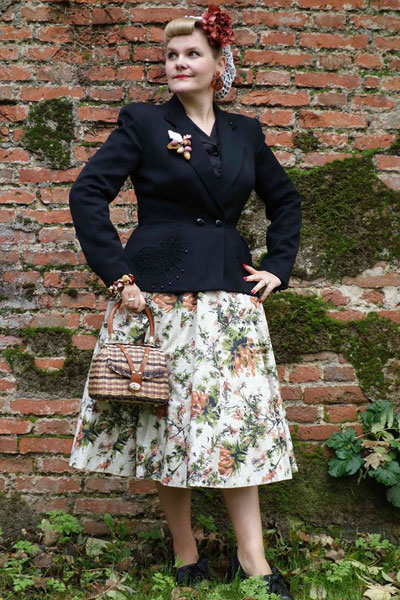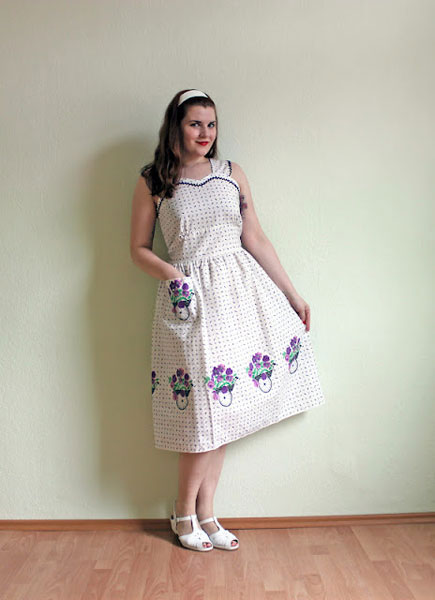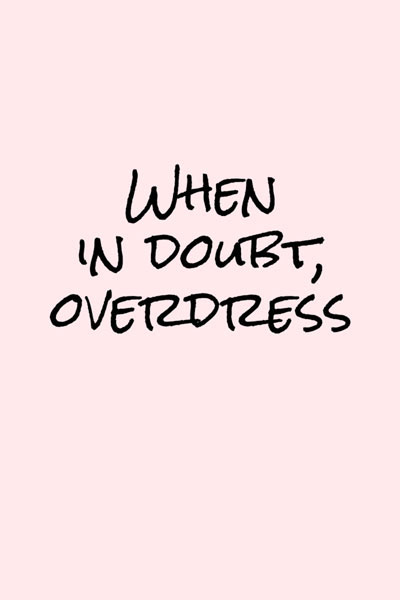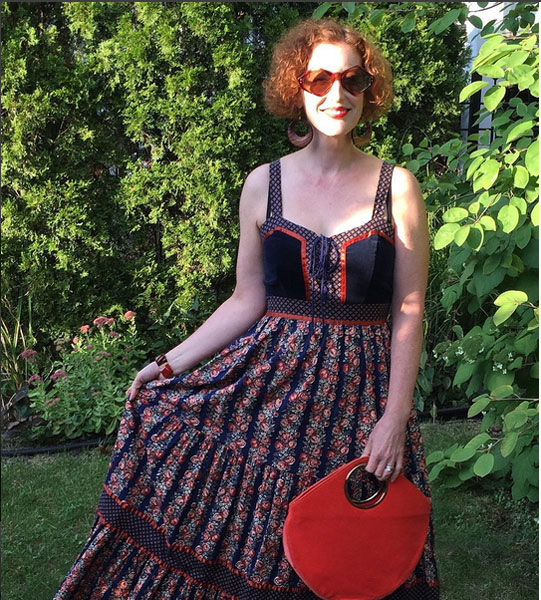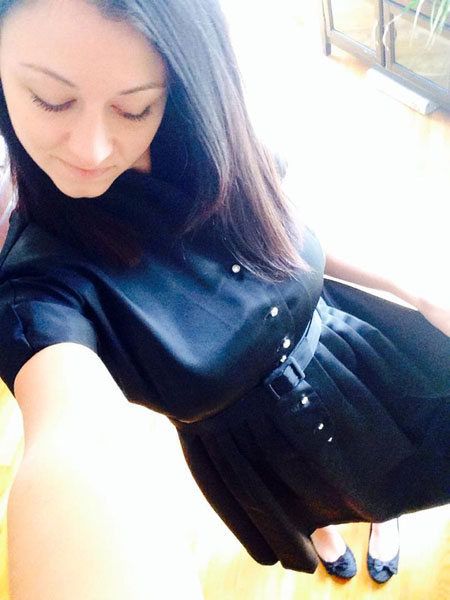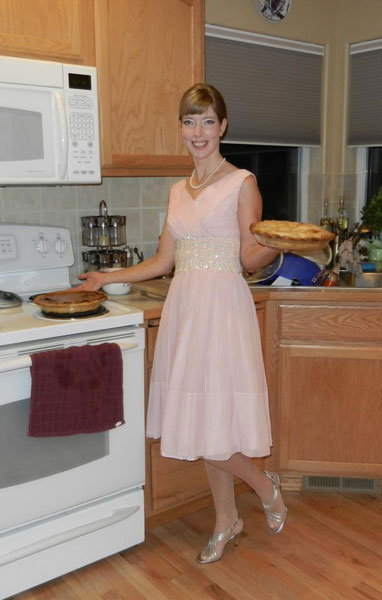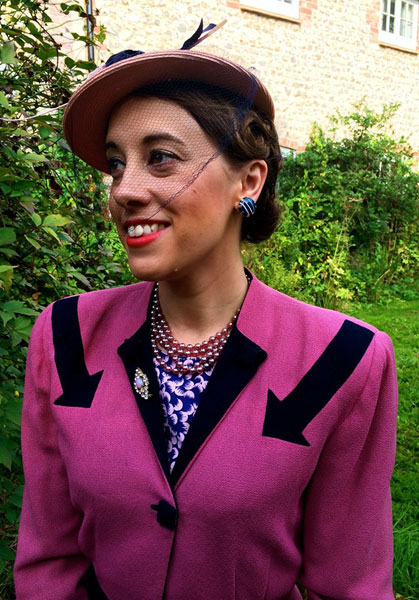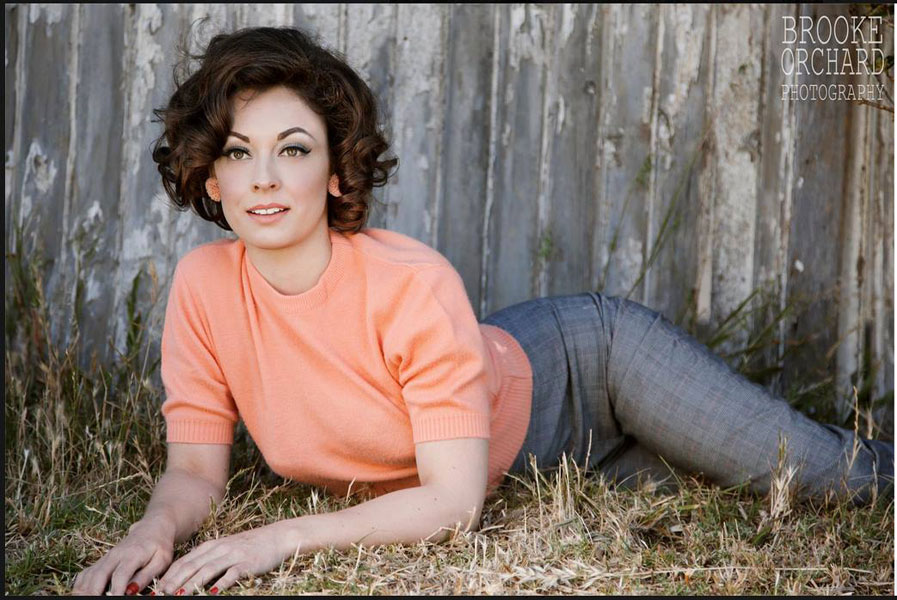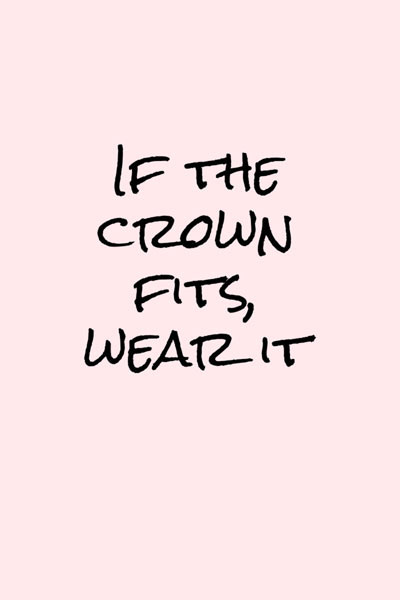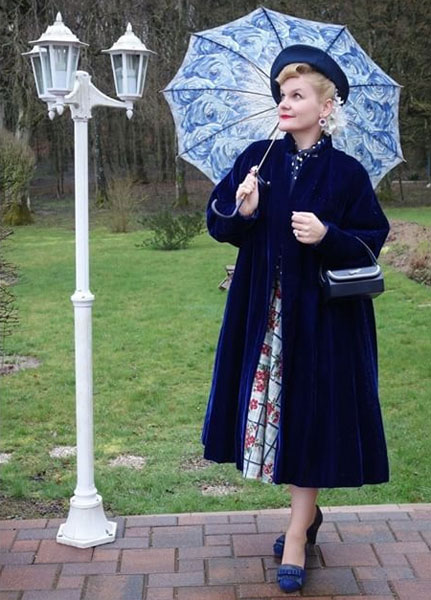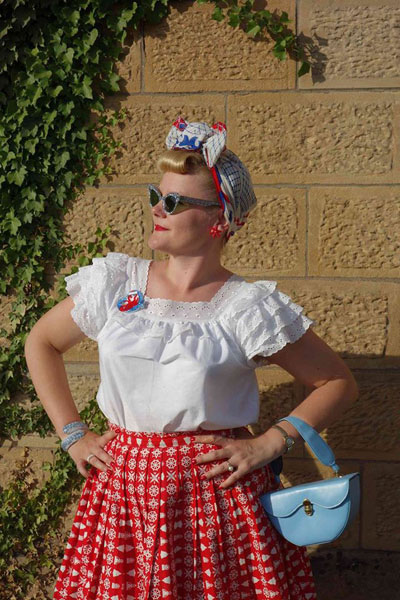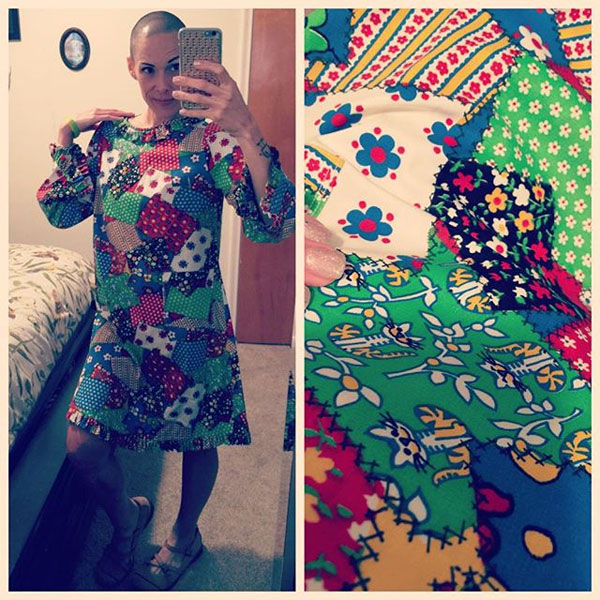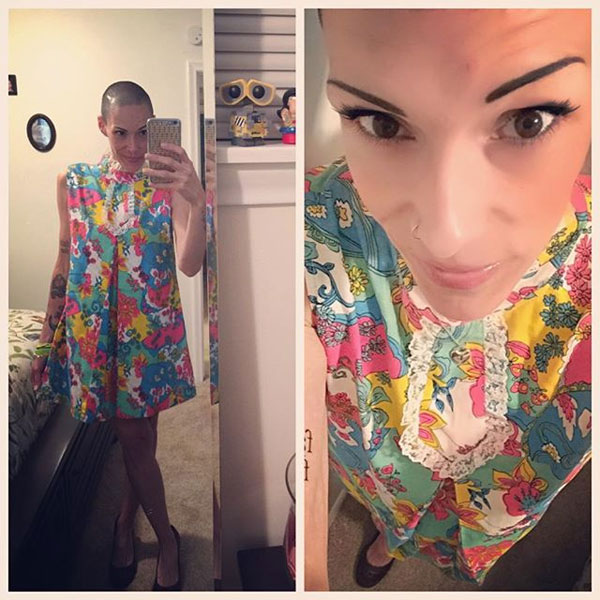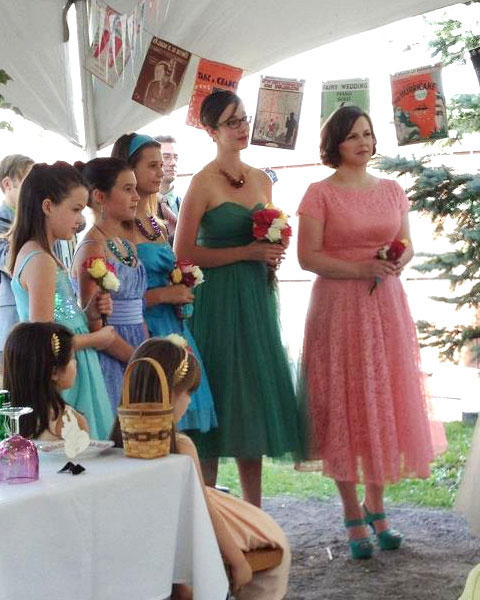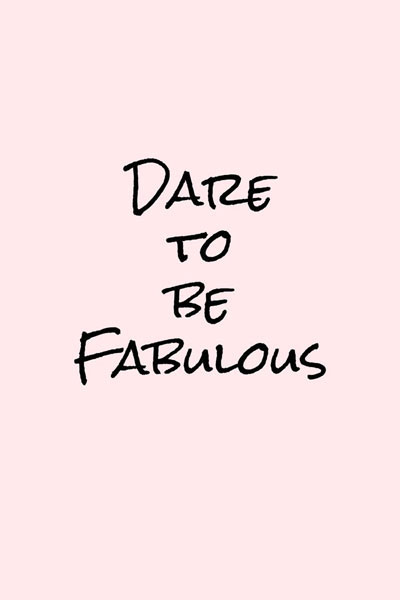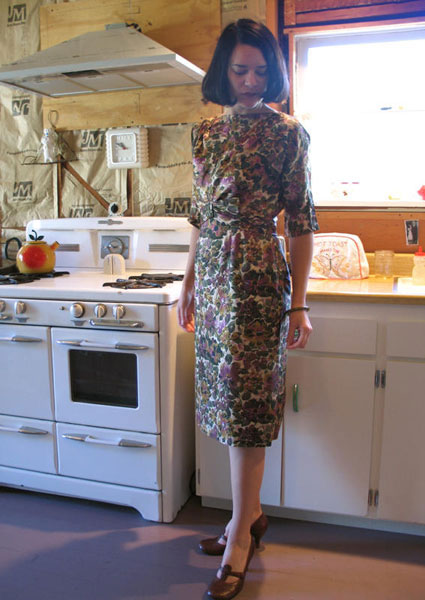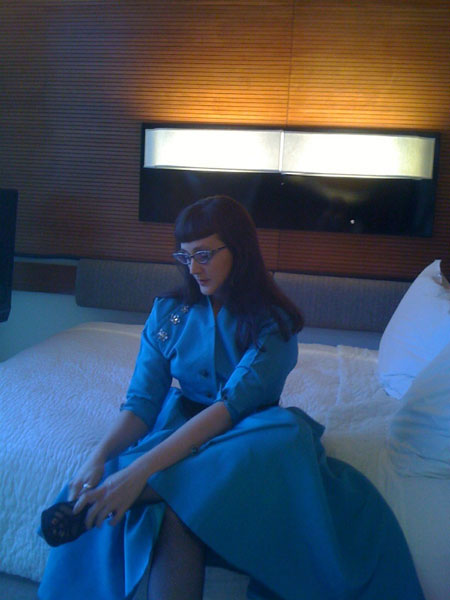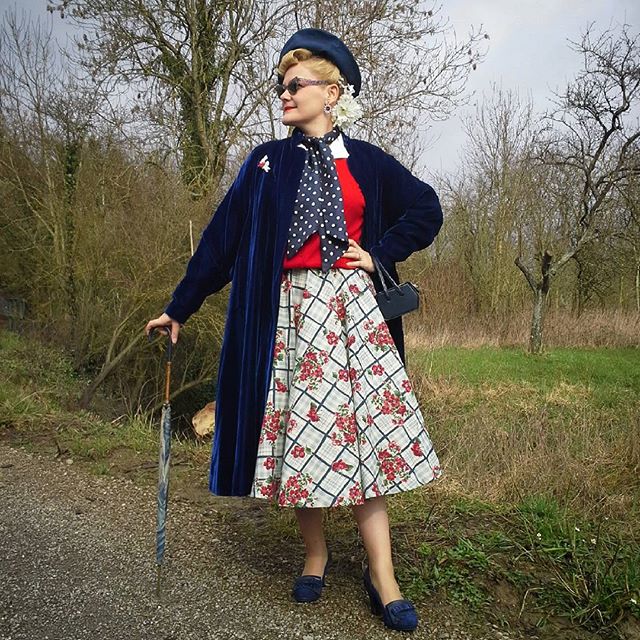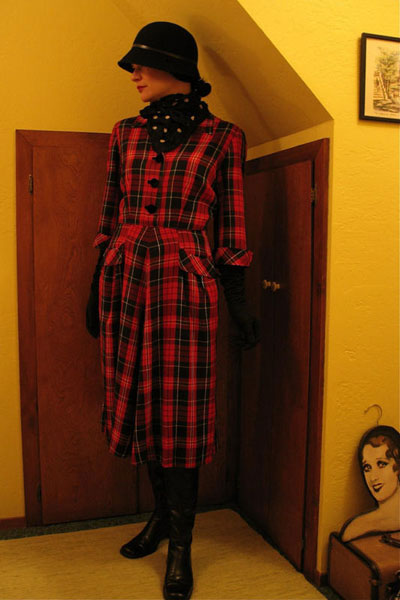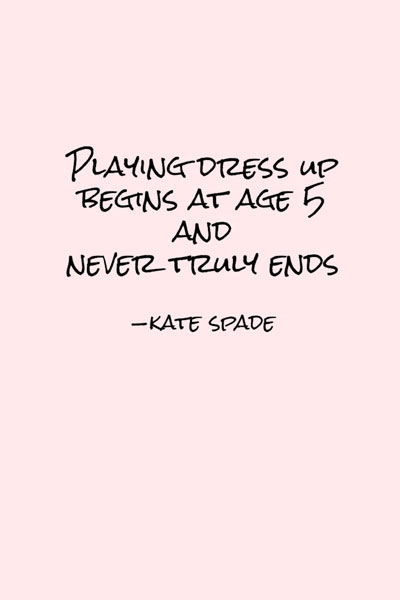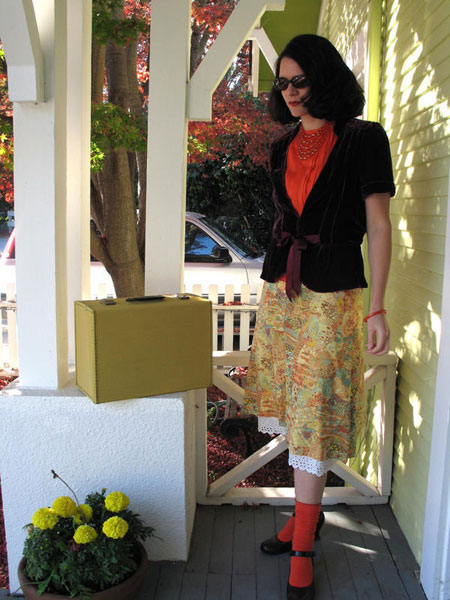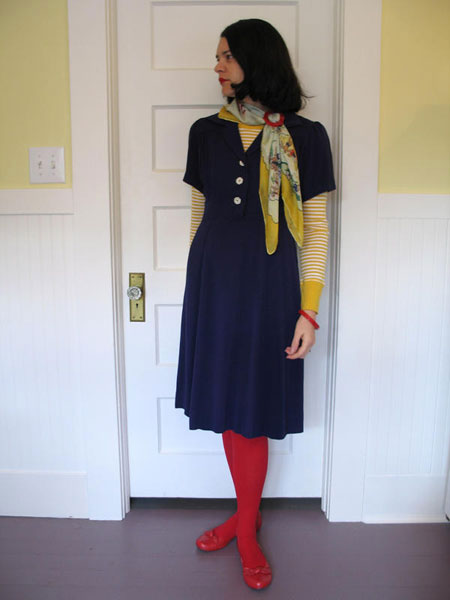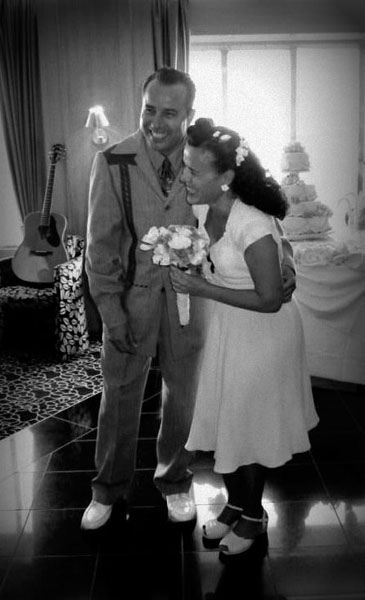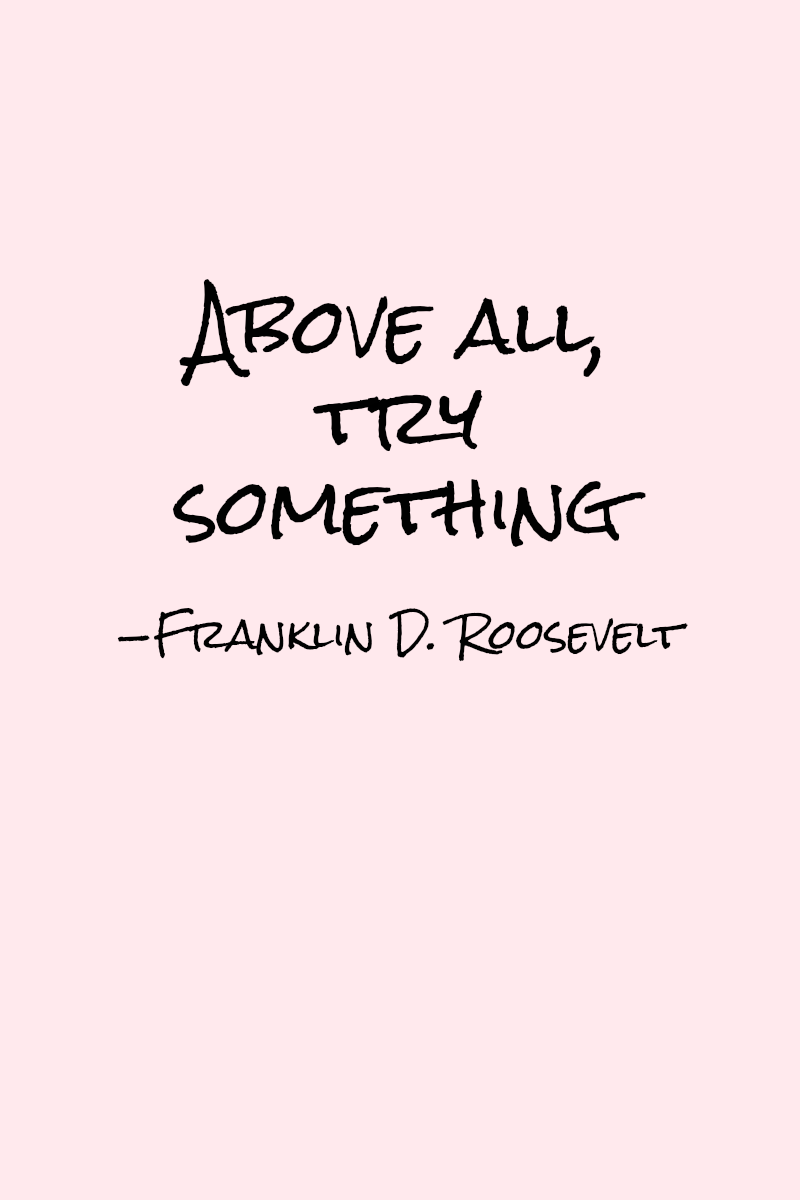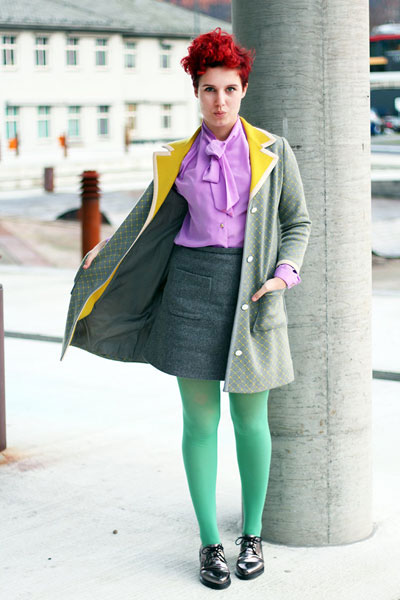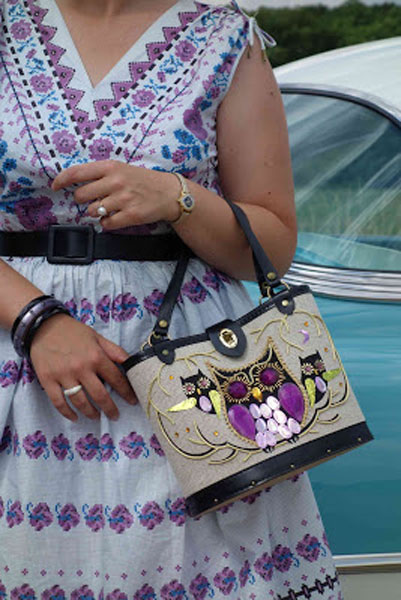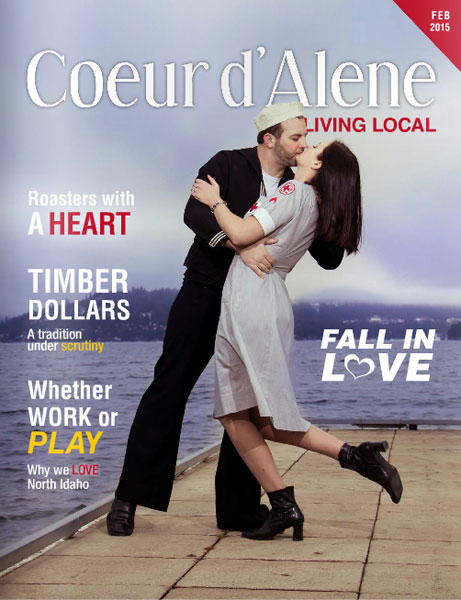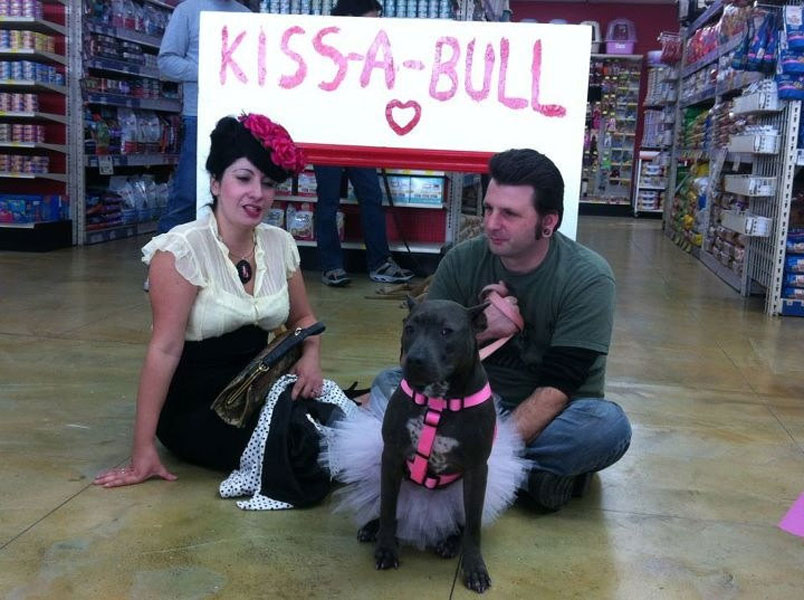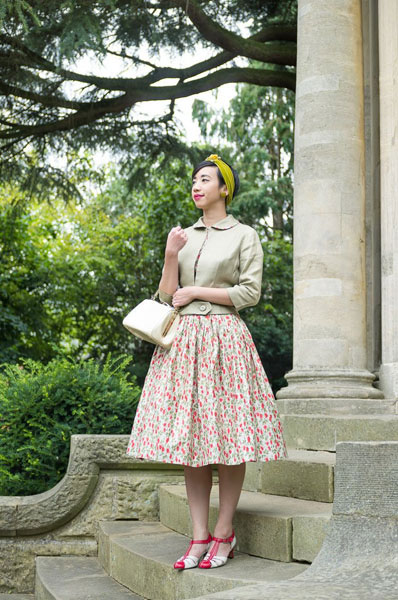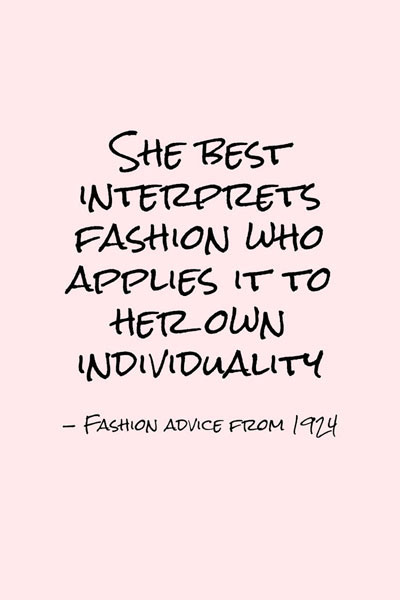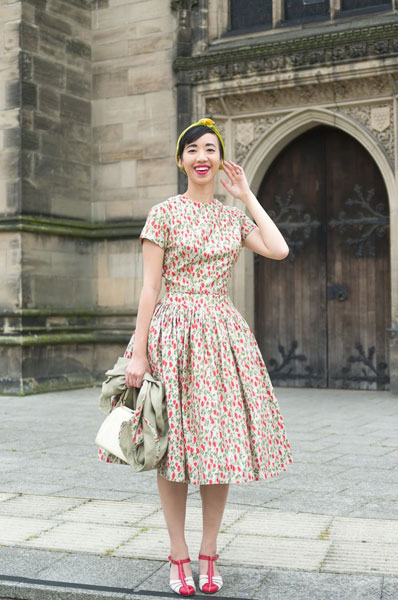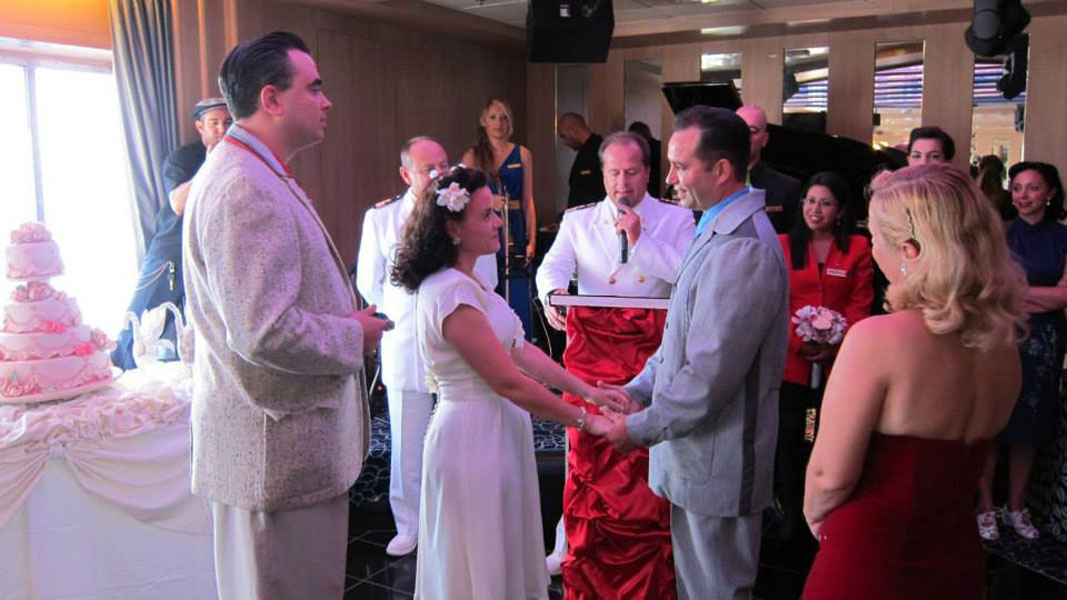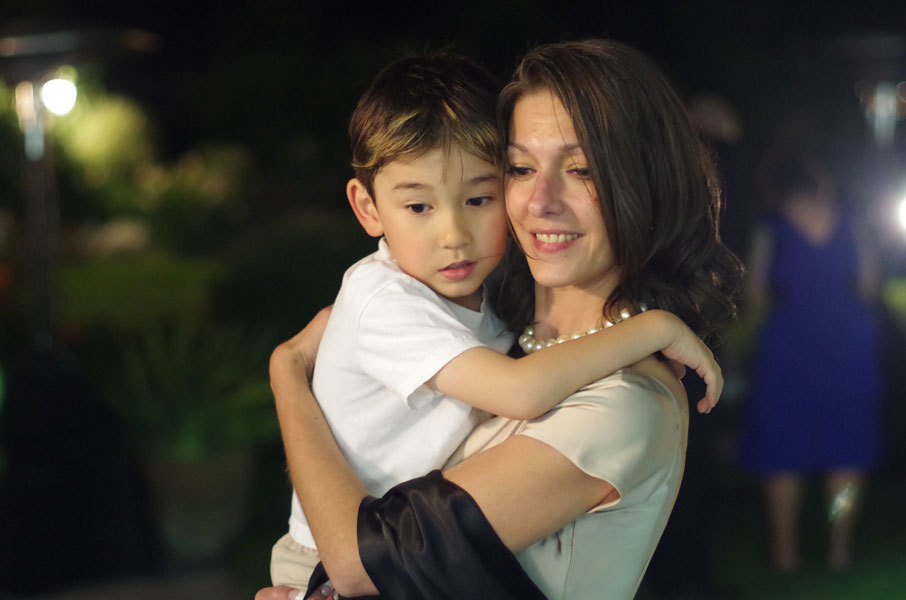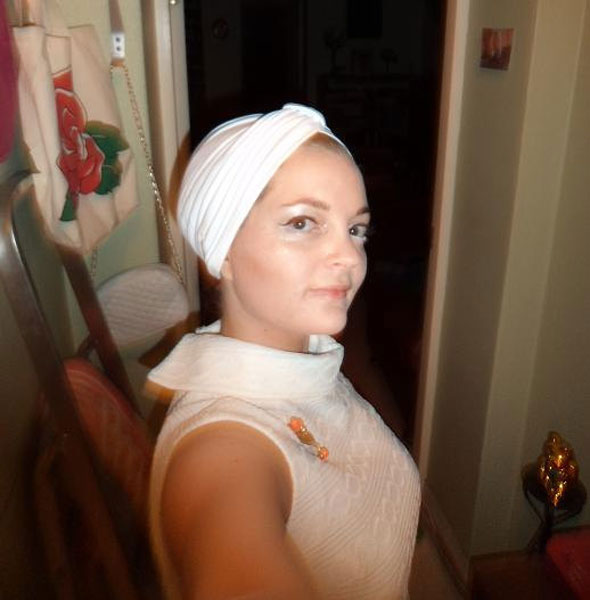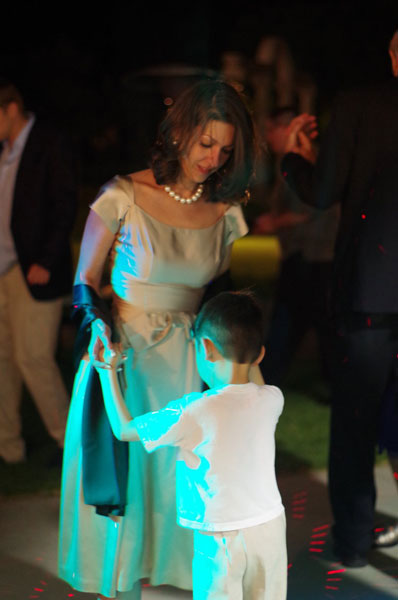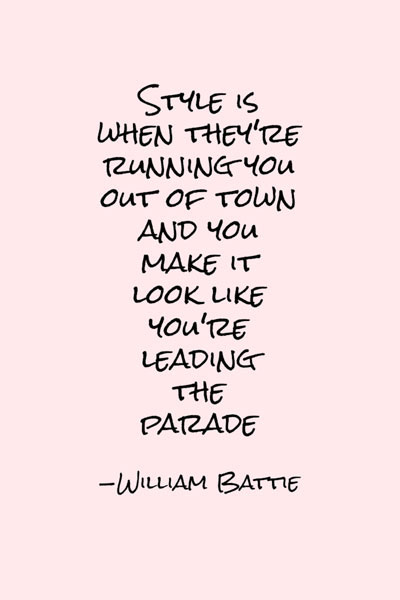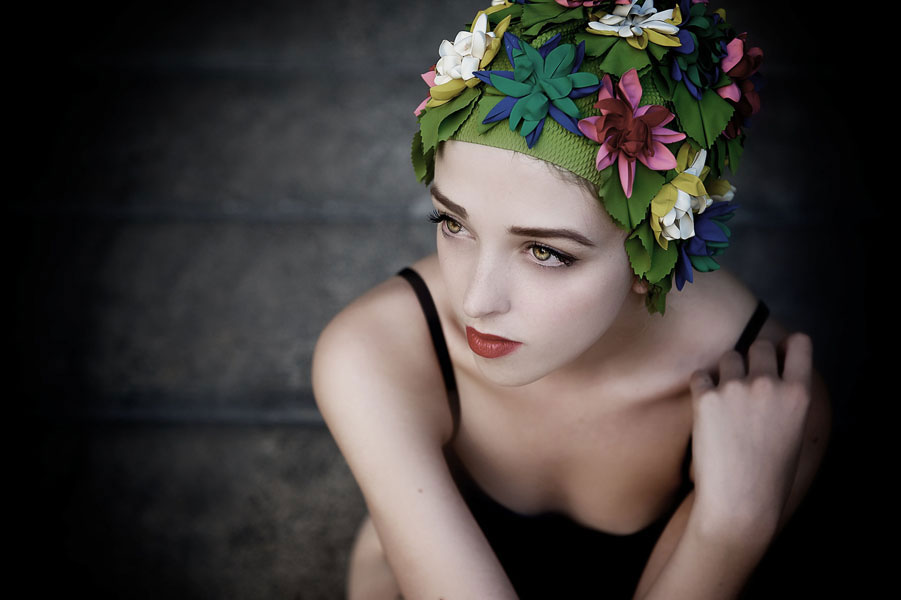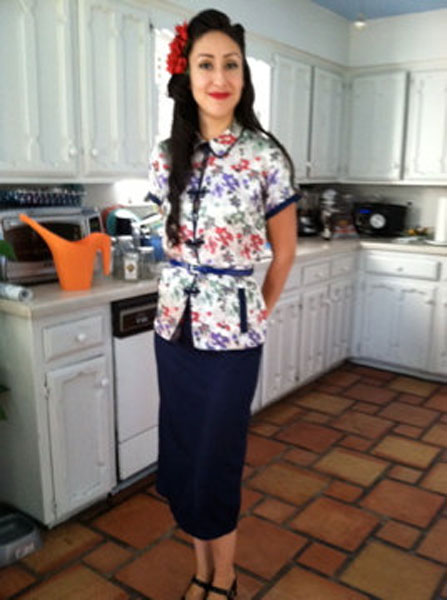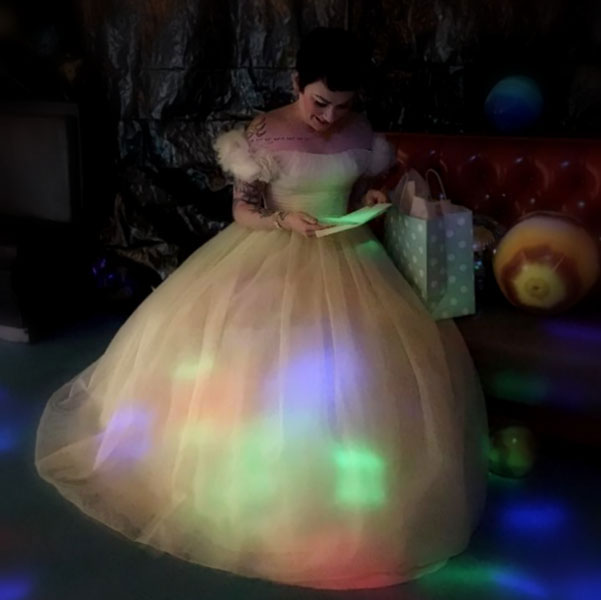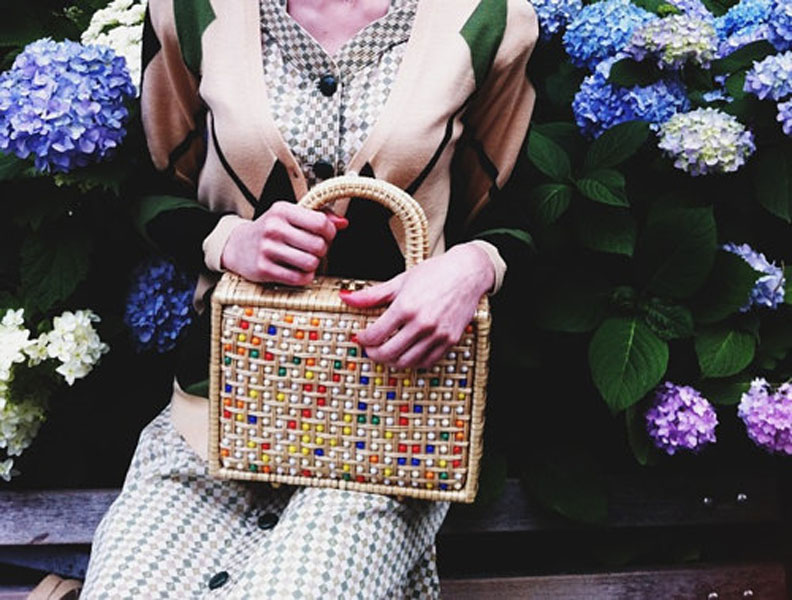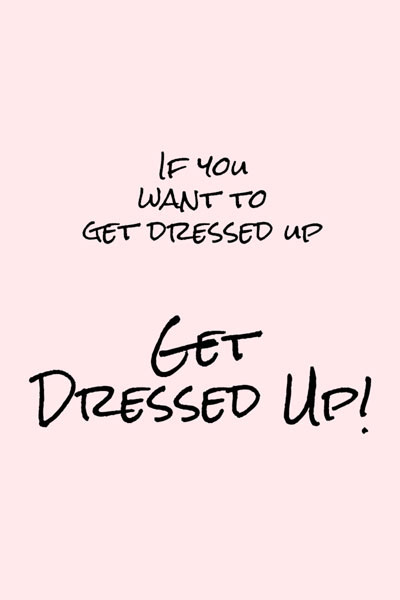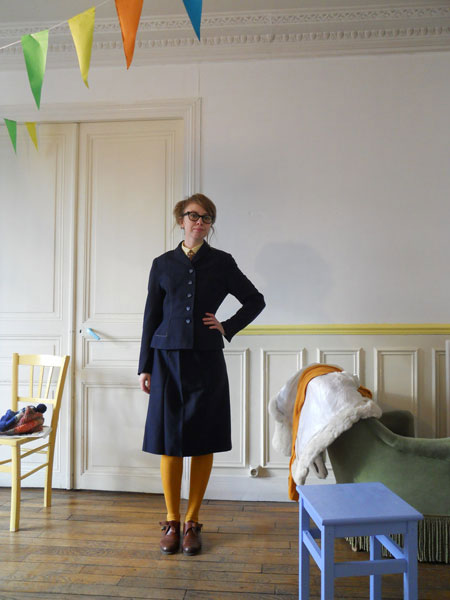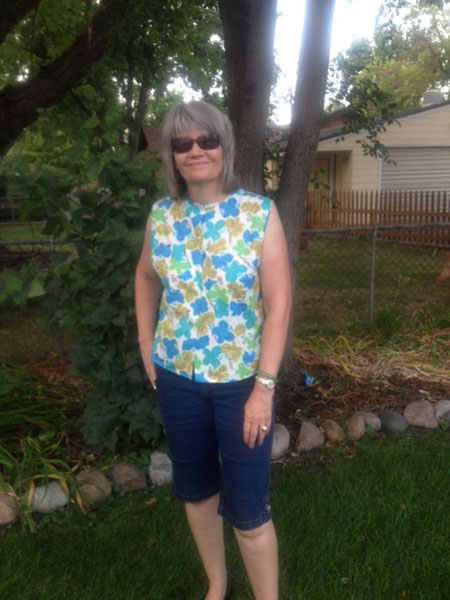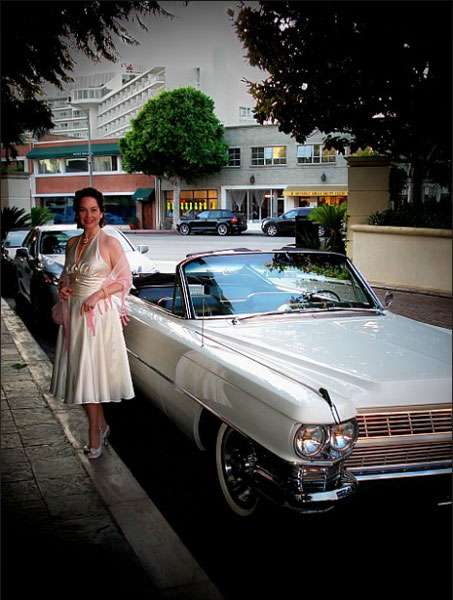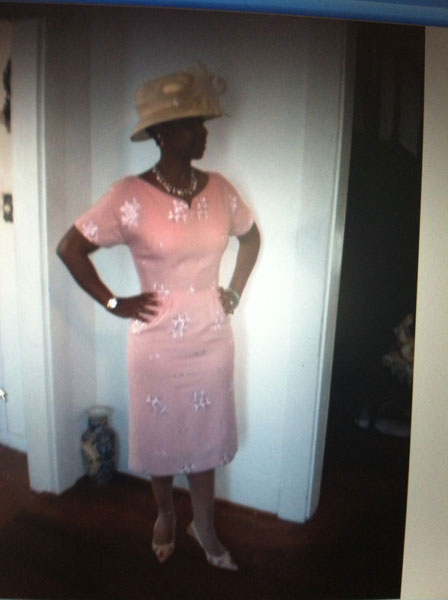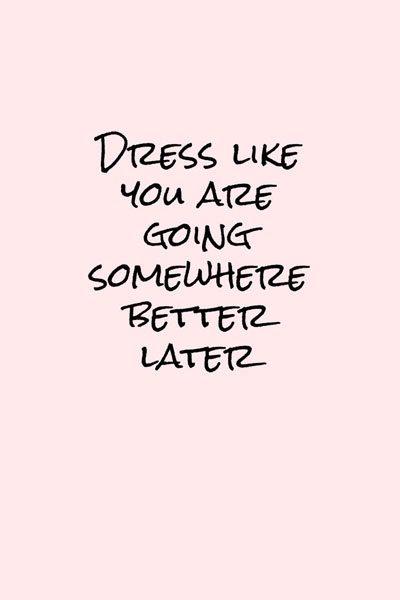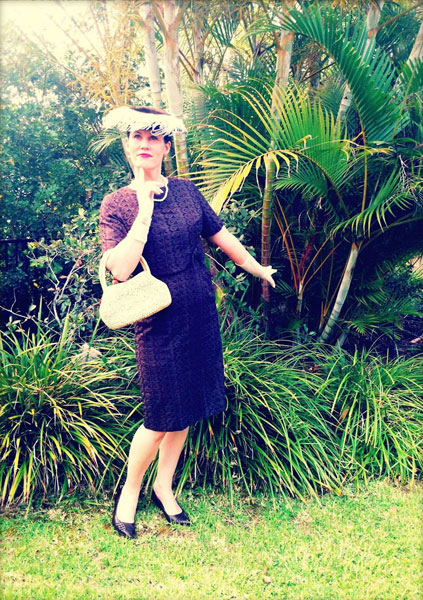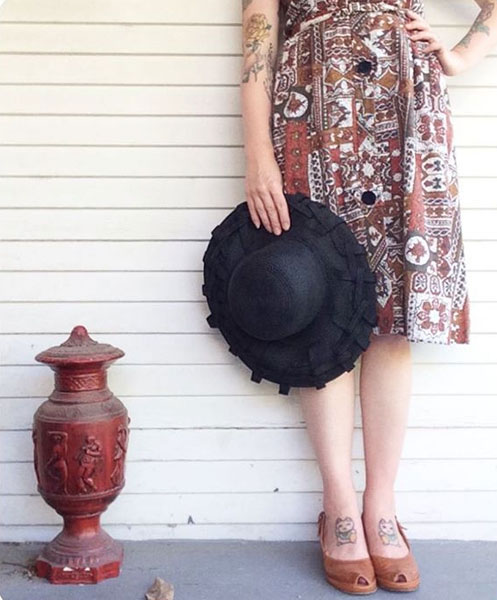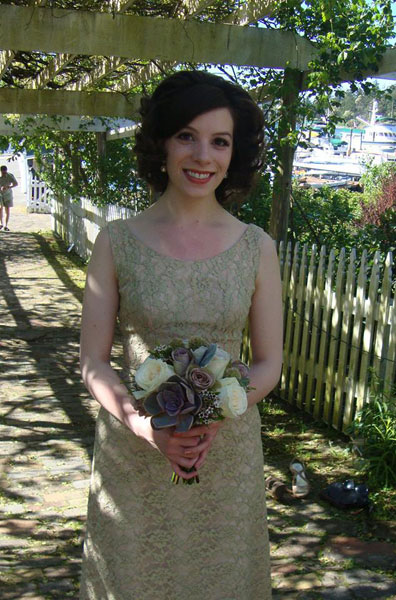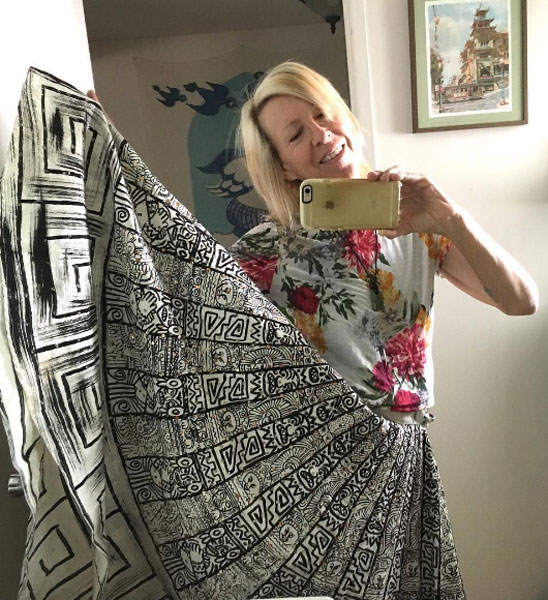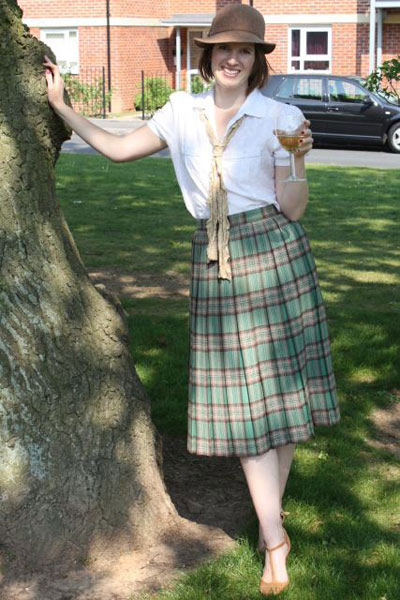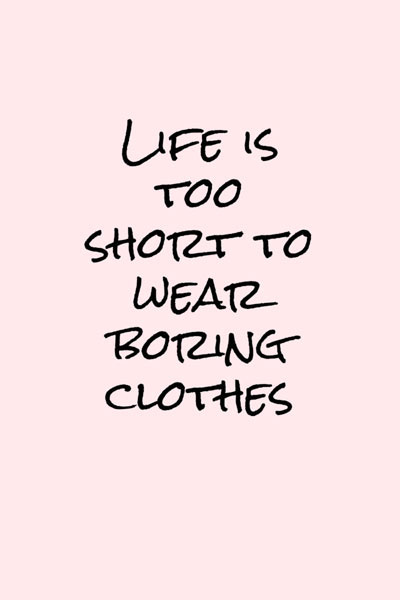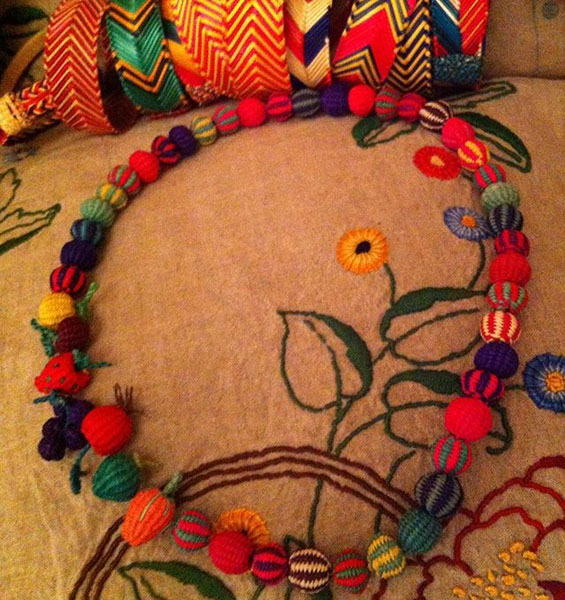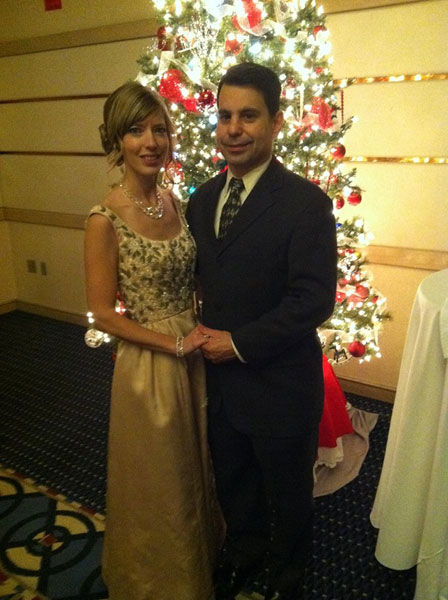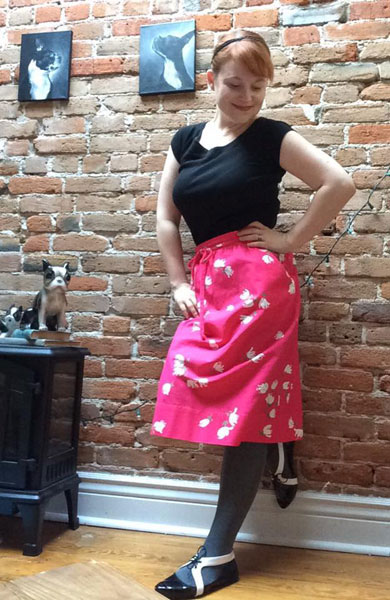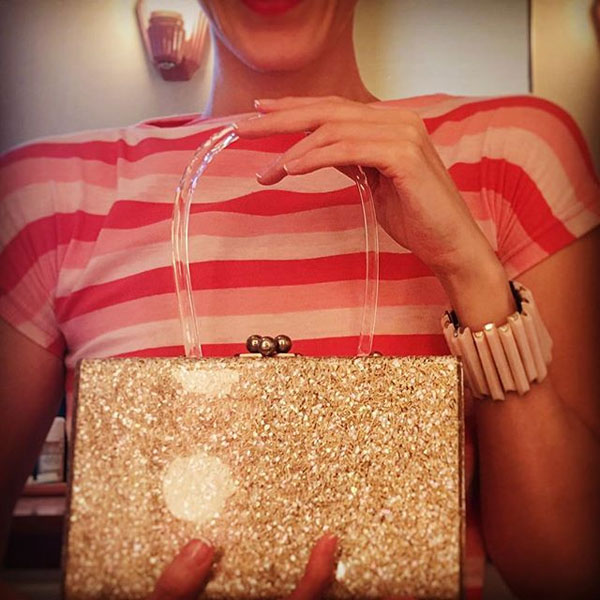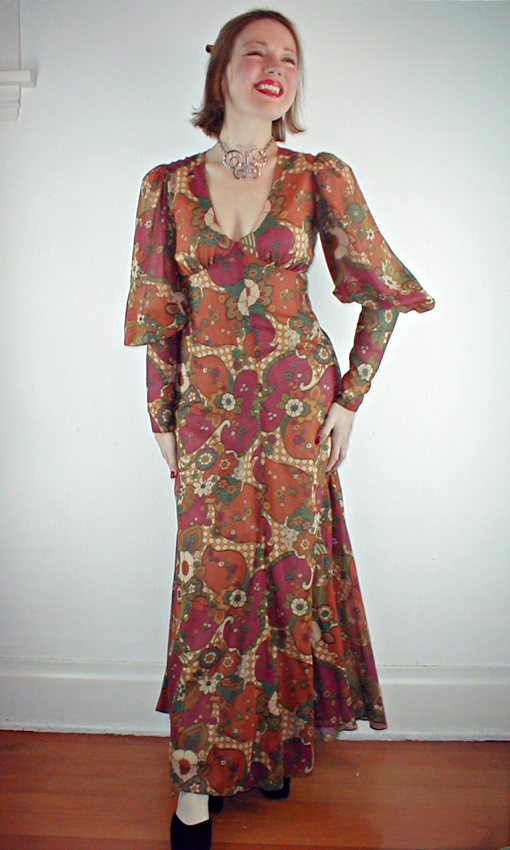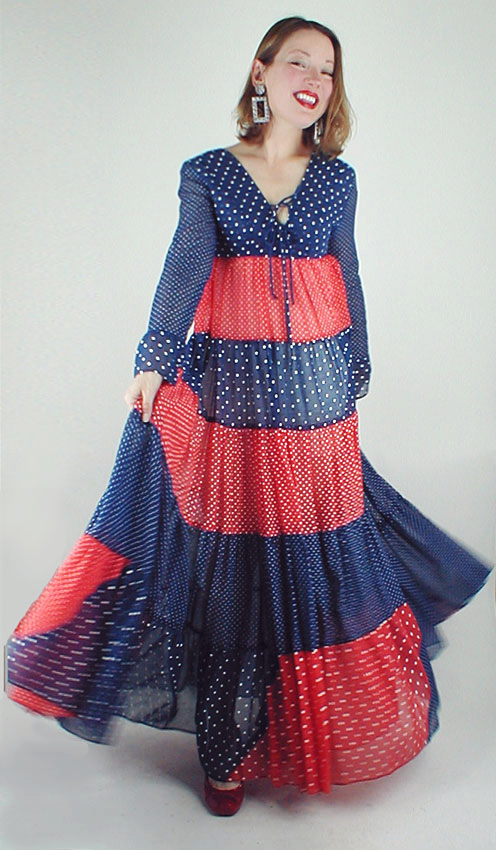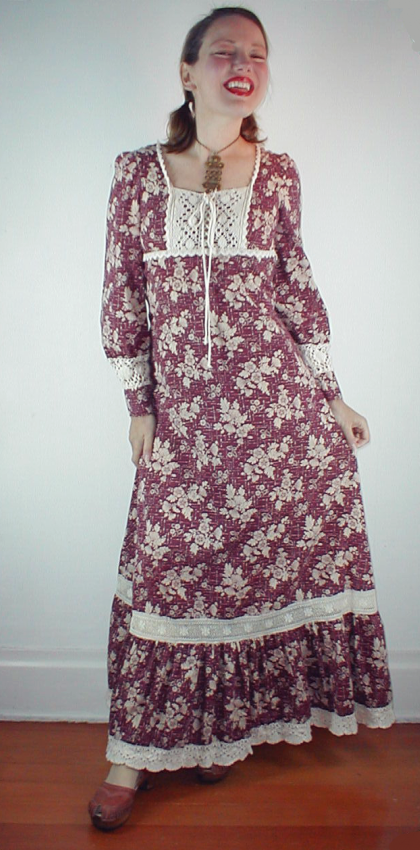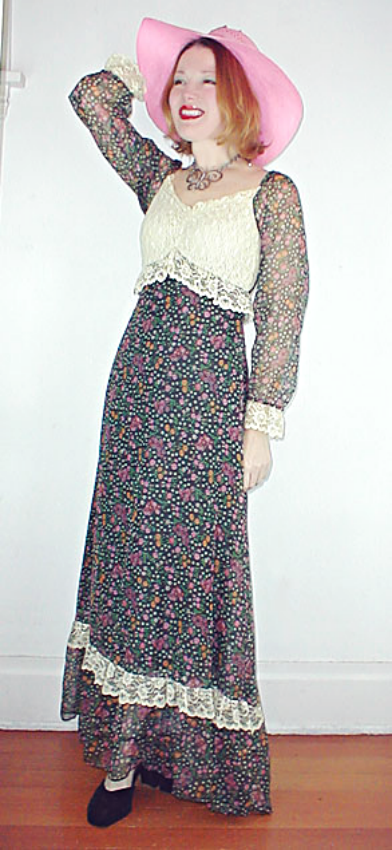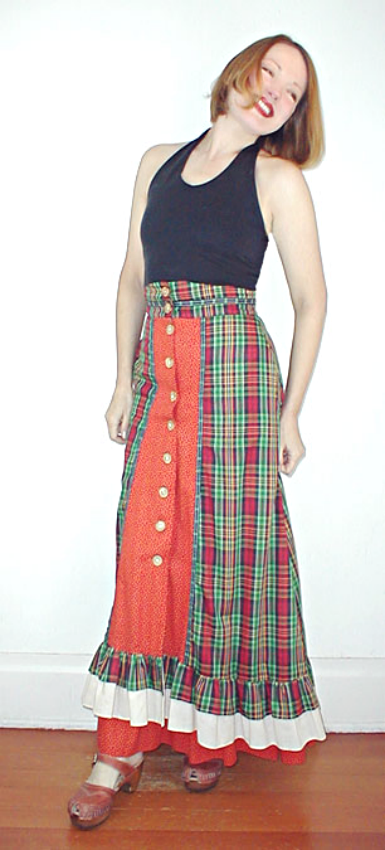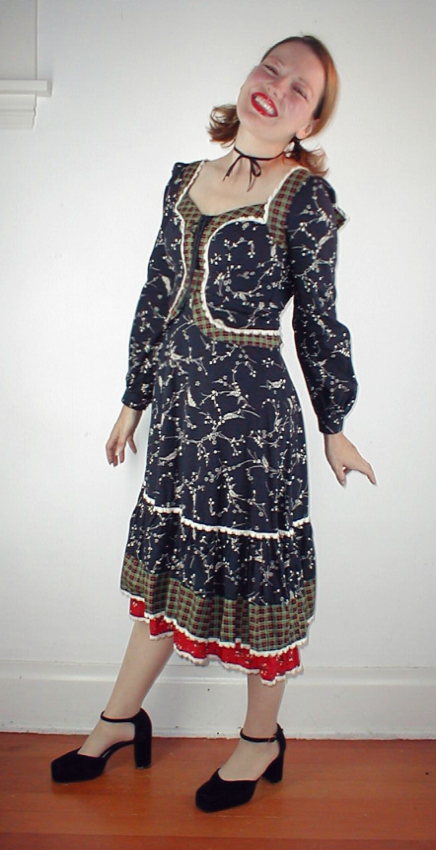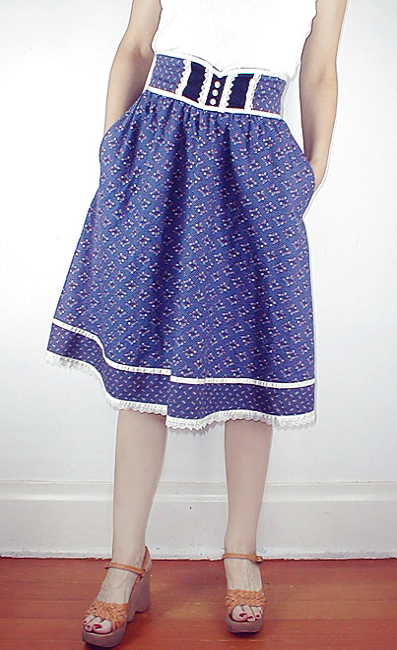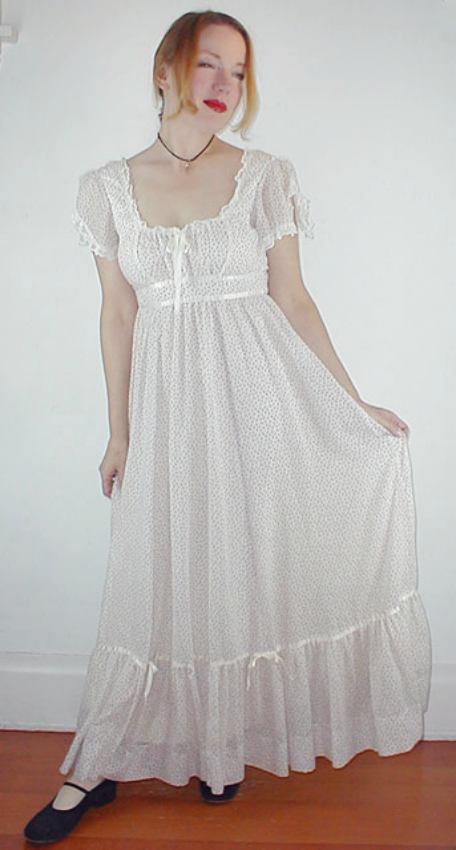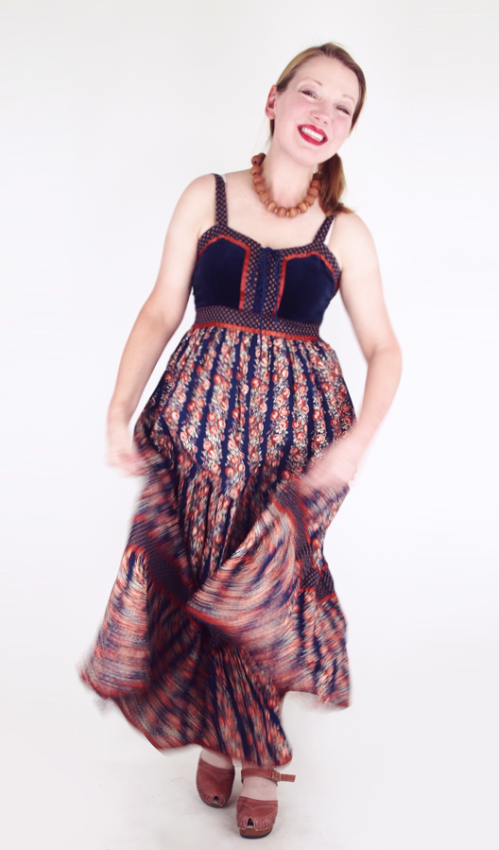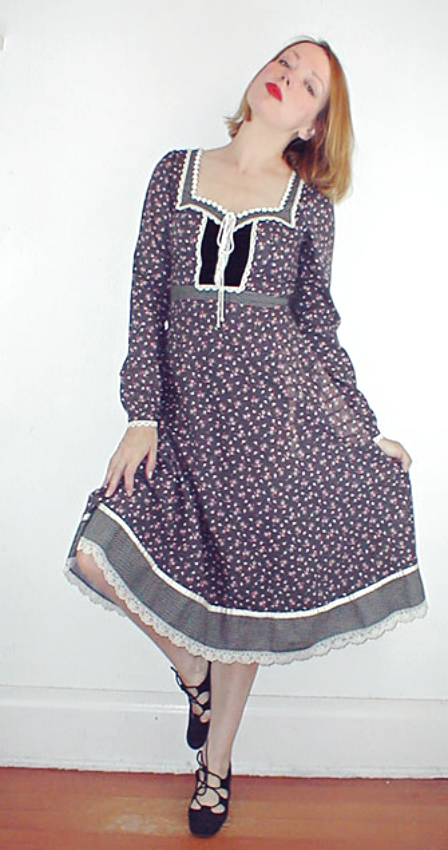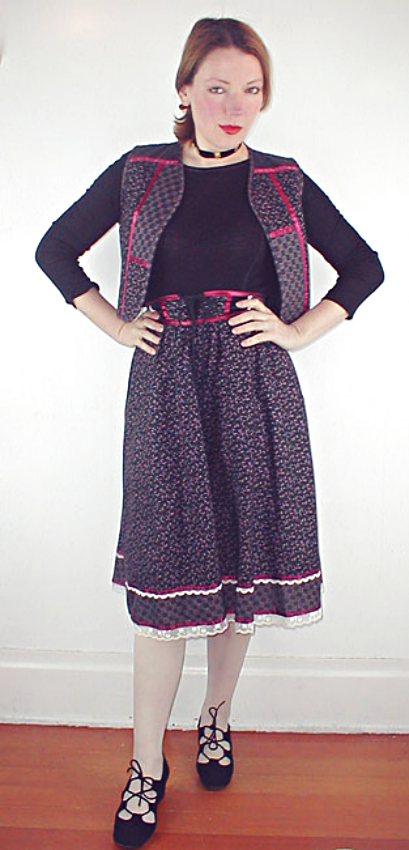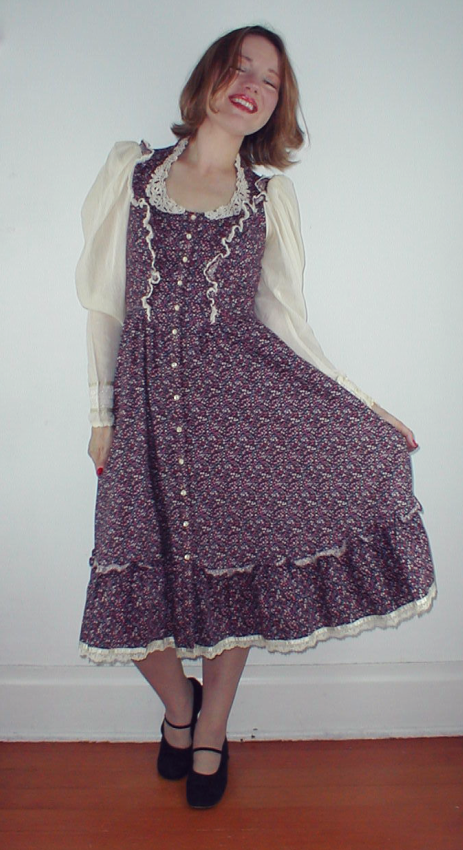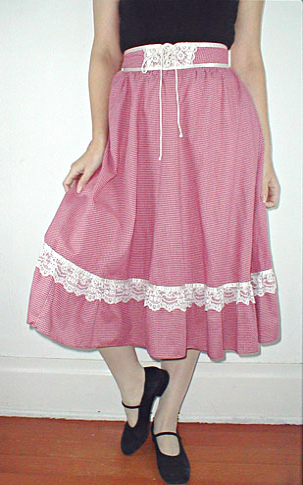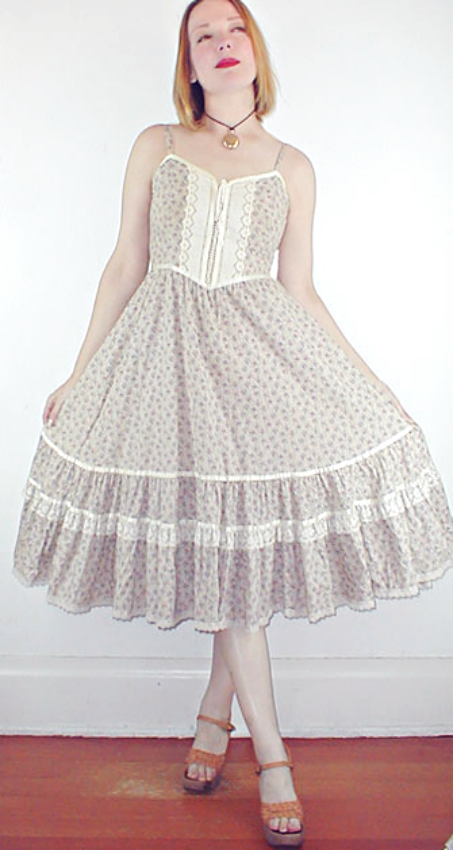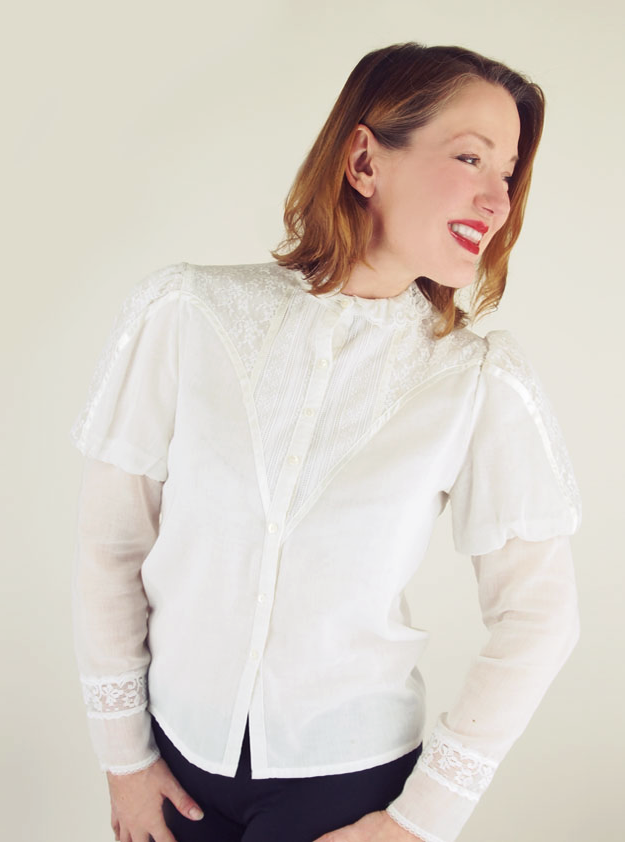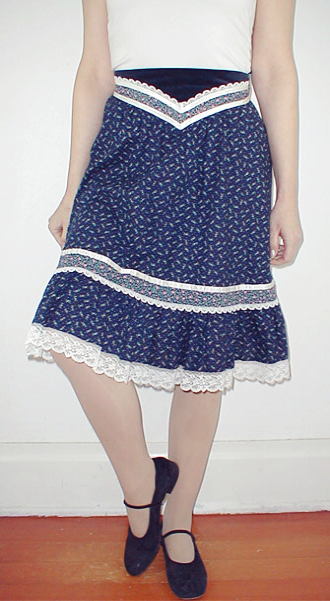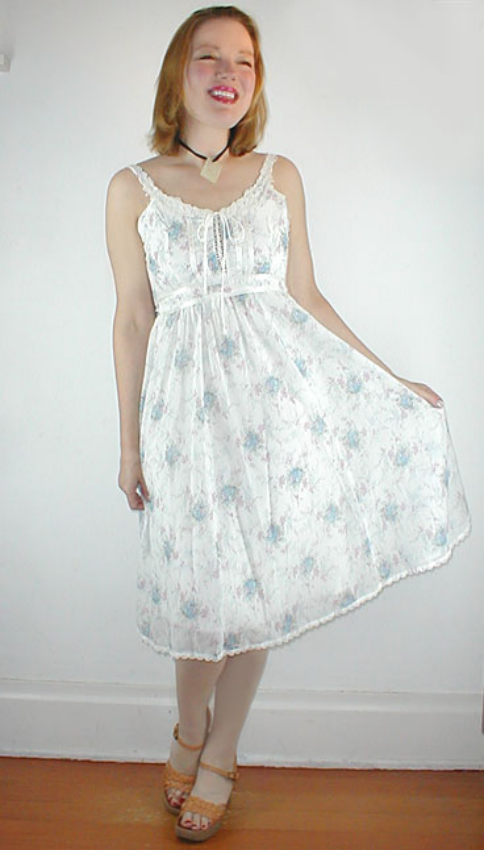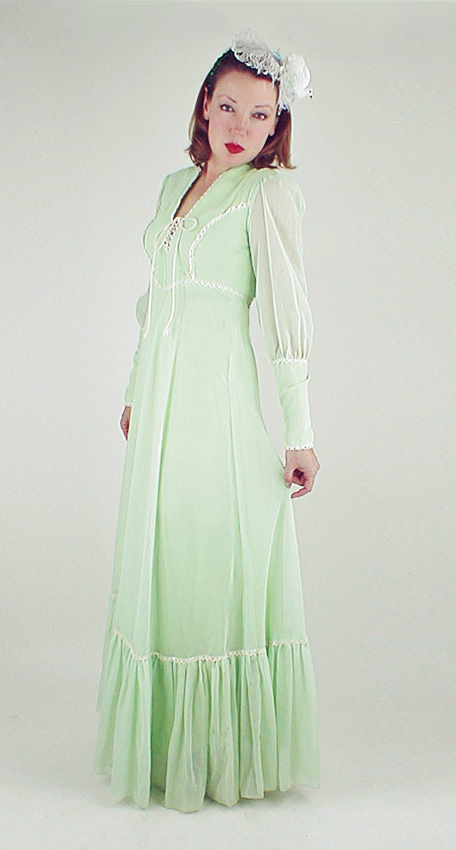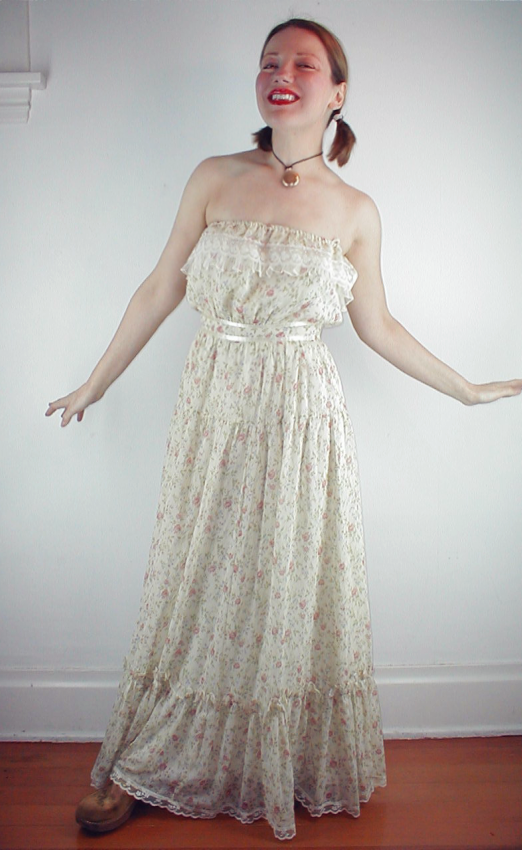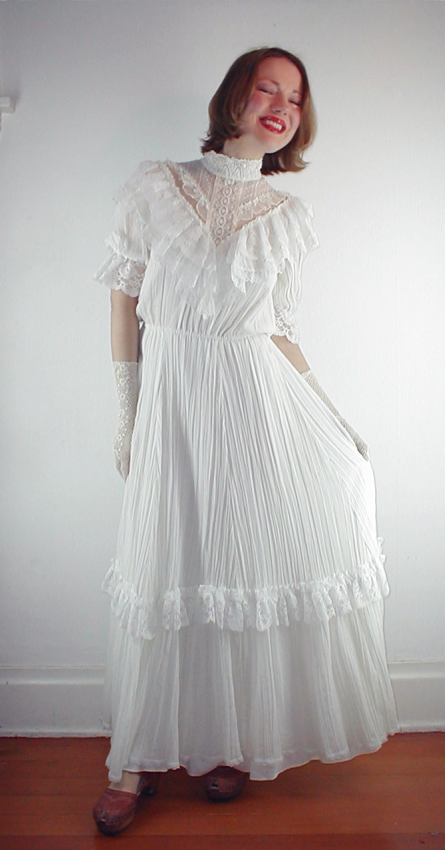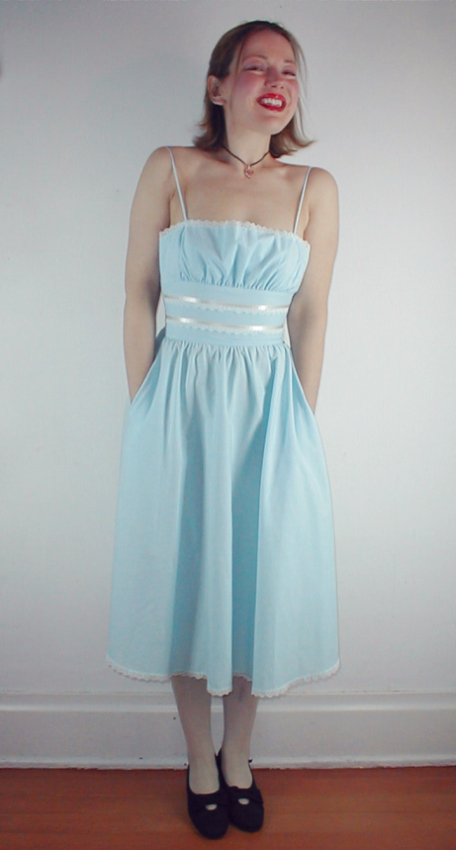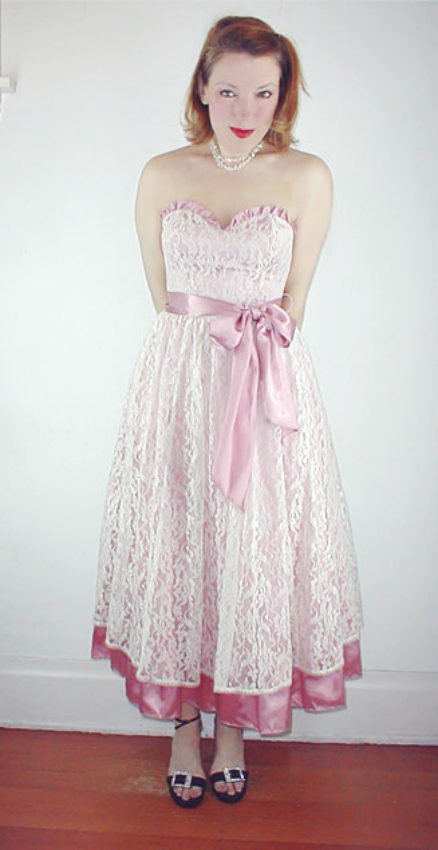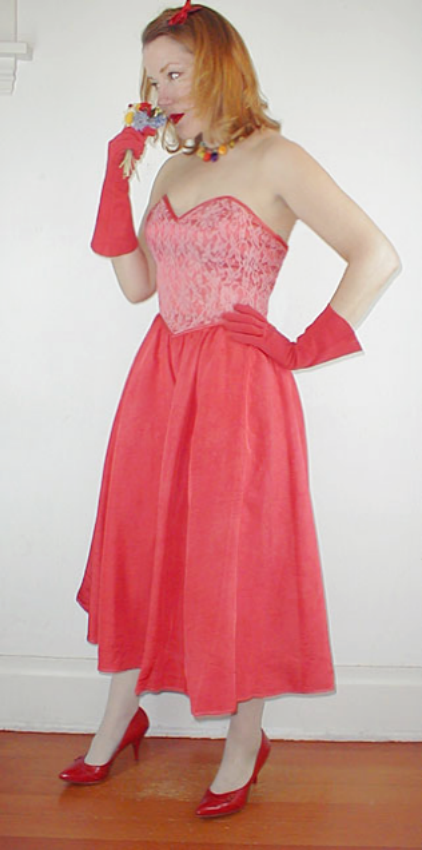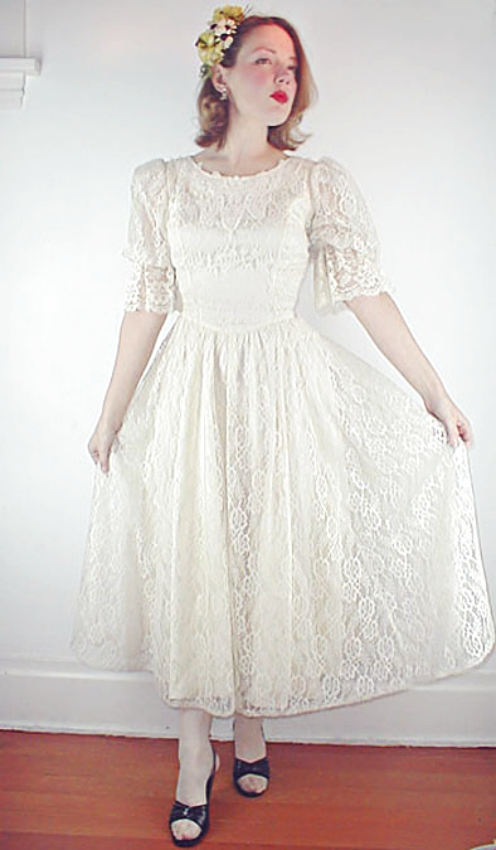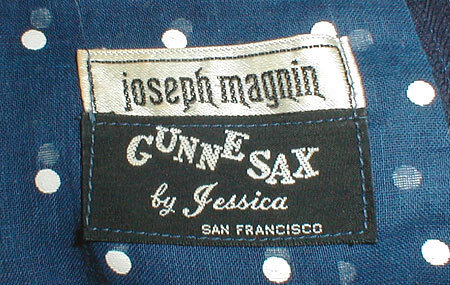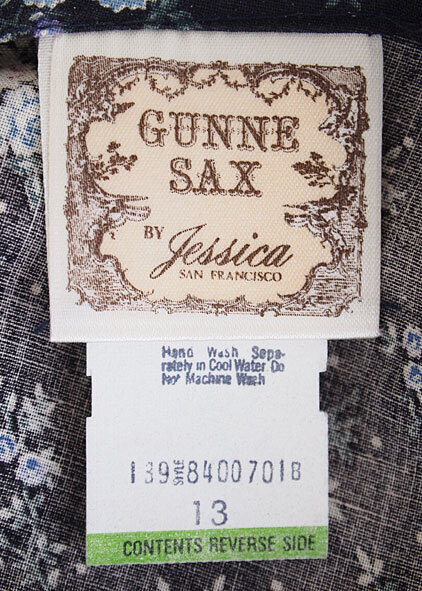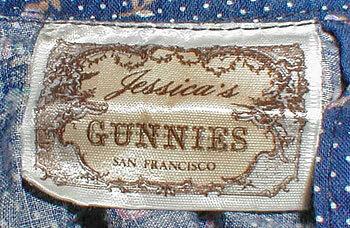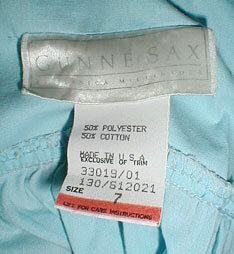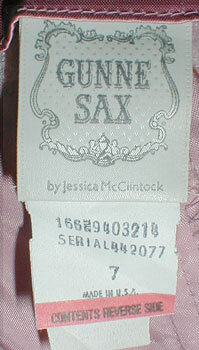Continuing with my posts on caring for vintage, this one I hope should help answer the basic question of what and how to wash, and what (and how) to dry clean. Stain and odor removal, along with wrinkle removal, are topics for the next few posts. In case you didn't catch the beginning of this series, I'm putting a draft chapter of my upcoming book out to you for comment in blog posts. The book is designed to welcome newcomers to vintage, although I hope it does something for those who have been around awhile as well.
In general, don’t throw vintage clothes in a washing machine for a regular wash. Clothes from the 1970s on may be labeled to show that they are washable, but if you would like to preserve the clothing longer, go the gentlest route, either a very gentle machine wash or hand wash. I can’t recommend using your dryer for anything vintage.
Choosing what to try washing:
Pure silk. If not a crepe-textured or knit fabric, or one that is loosely woven, you may try gently hand washing your item, with the caveat that you need to check for dye bleed first. Soak the garment in cool to tepid water with very mild soap or a gentle shampoo, rinse well in cold water, then add a small amount (several tablespoonsful in a 5-gallon bucket) of white vinegar to clean rinse water. The vinegar will help revive the silk’s luster and pull out any remaining soap. Rinse again to remove the odor of the vinegar, then roll up your item in a clean towel to remove excess liquid. Finally, lay any delicate item flat and hang any sturdy item to dry on a padded hanger.
Pure cotton. Mostly sturdy and washable in warm water with any detergent. Cotton may shrink, and its dyes and prints may fade. Some kinds of cotton have special finishes that may wash out, such as glazing or sizing. While many modern, synthetic finishes are permanent, vintage finishes made of glue, starch, resin, gelatin or paraffin may not be. Cotton often is best (crisper and smoother) when ironed, and easiest is ironing it while it is still slightly damp. Although you may use warm water for cotton, hot water and hot drying often shrink, fade and weaken cotton fibers.
Chlorine bleach is hard on fabric, even sturdy cotton (it’s death to other fibers). It will weaken the fibers, fade the colors, and turn any synthetic component in the fabric yellow. A non-chlorine bleach such as Oxiclean or Biz may be used on cotton, but don’t use it to bathe silk or wool.
Pure wool. Gently wash unembellished knits in cool water and Eucalan, which is a gentle no-rinse wash. Always treat wool gently (so don’t wring or twist) when it is wet because it loses some strength in that state. Roll the knit in a clean towel to remove excess moisture and dry flat away from any direct heat after carefully shaping the piece. Woven wool is usually best dry cleaned to avoid shrinkage, and so often woven wool is made into tailored garments that benefit from professional pressing.
Show me a person who has never shrunk a wool sweater and I will show you a person who has never owned a wool sweater. Shrink happens, and although it may never return to its original state, you can at least try reshaping a mildly shrunken sweater by giving it a longish (30-60 minute) soak in cool water with a couple of tablespoons of liquid fabric softener or hair conditioner. Drain this out but don’t rinse, then gently lay the sweater out on a towel and carefully reshape it. Keep reshaping as the sweater dries. You might need to repeat the soak and reshaping to reach your goal.
If the sweater refuses to take your many gentle hints, my suggestion is to transform yourself into a diabolical sweater destroyer and hot wash and dry the sweater until it is heavily shrunken and felted. You can then cut it into shapes without it unraveling. Next year’s Christmas ornaments?
Pure linen. Dyed linen items can bleed color and unwashed linen can shrink, so some pieces are best washed in cool or cold water, otherwise, you can consider warm water. A very light and delicate linen piece should be treated to a gentle hand wash, other pieces can stand a gentle cycle-machine wash, but as always, hand washing is easiest on the item. Air dry the garment, and if you are going to iron it, do so while it is still slightly damp. Dry clean any linen garment with built-in structure, such as a tailored suit.
Pure rayon. Do not wash rayon with a crepe texture, or you will be donating said dress to a stylish little girl! In fact, I’d suggest dry cleaning any textured rayon fabric to avoid shrinkage. Plain weave rayons are, however, usually washable in cool water. Always test for the possibility of dye bleed before plunging your item into the drink.
Pure nylon. Hand washing (not machine washing) in cool water will definitely help vintage nylon items last as long as possible. Always air dry nylon and avoid any high heat.
Pure polyester. Hand wash or gentle machine wash. Very often the care tags on polyester garments from the 1970s proudly boast that the item is machine wash- and dry-able, but you will extend the life of your garments by washing gently and avoiding the dryer altogether. All synthetic man-made materials can shrink, deform or even melt with heat, so hot dryers, hot water, and hot irons are all verboten.
Pure acetate. I tend to cold wash and drip dry 1970s acetate knits shirts and other newer items (in accordance with their care tags), and dry clean the acetates so often made into formal wear prior to the ‘70s. You know those poufy 1950s taffeta and tulle gowns? The taffeta in these dressy confections, usually acetate, is better dry cleaned to keep its crisp structure. I have seen washed acetate taffeta with tiny overall wrinkling and limpness from washing, which apparently comes from any heat at all…acetate is extremely heat sensitive.
OK, maybe it’s the Virgo in me, but I believe in keeping notes on things that work so that I can—you know the old saying—lather, rinse, repeat. Notes on fabrics and what works to clean specific things are easy to forget, but almost as easy to note down and save. Examples of what to note:
· The exact measurements of your favorite cashmere sweater, so you can reshape it perfectly (called blocking) while it’s still wet.
· What items have bled dye when tested
· How you got that Sriracha stain out of a washable silk dress
· What finally removed ancient underarm yellowing from your favorite white vintage blouses
How to wash by hand
Hand washing can be done in a clean sink, a bathtub, or a bucket.
Always check for the possibilities of dye bleeding and shrinking by moistening a small spot of your garment’s fabric in an inconspicuous place, using the soap or detergent and water of the temperature in which you plan to wash. Let the liquid sit a moment, then blot the spot with a white towel. Embroidery and other embellishments should be checked too. If cold water doesn’t budge the dye, don’t assume that warm water won’t—always test with what you will be using for your wash water. If you see any color on your white towel, I would recommend dry cleaning. Allowing the test spot to dry you will see puckering if the fabric is inclined to shrink.
Always zip up zippers and fasten hooks to keep from having these catch on anything in washing.
Metal components can rust in wash water, including covered buttons (fabric on the outside, metal on the inside), which you would want to remove before soaking a garment.
There are washing machines that have “hand washing” cycles that may provide you a good substitute for true hand washing, but the genuine process has the added benefit of letting you monitor the situation. You can make certain there really is no dye running in the water, and you can check to see if your stains are coming out or need a bit more time to soak.
In about two gallons of water, wash using just a few drops of detergent or up to a couple tablespoons, depending upon whether your garment is lightly or heavily soiled. As the water discolors, change it out, adding detergent again, but less. Repeat until your wash water remains clear. Swirl the fabric in the water gently while washing, as fibers are weaker when wet.
Rinse very thoroughly, until the rinse water is suds-free—completely clear. Never wring or twist wet fabric to dry it, just gently press water out, then roll in a clean towel to absorb moisture. If the item is sturdy it may be drip dried, but dry your knits and fragile items flat.
Before natural/manufactured fiber blends, it was a bit easier to try to decide how to clean your garment with no fabric content tag. If you try a thread-burn test and can’t figure out what fiber you have, it may well be a blend and will affect how you treat the fabric. A cotton and polyester blend shirt will be washable but will not take high-heat ironing…but it also won’t wrinkle as much as 100% cotton.
A special place in hell has been reserved for the persons involved in developing a certain double cloth with an inner synthetic knit layer that crumbles into powder over time. You find this fabric used mainly in the mid to late 1960s and into the ‘70s. Many vintage sellers I know call this “devil dust,” and it truly is a biohazard making the garment only fit to be disposed of. I have seen important pieces made with this crumbling fabric restored by museums, but it is not practical (or healthy) for most people to deal with. Check for it between the outer layer and the lining of a coat (it sometimes has clumped up inside the hem), and inside dresses, shoes and boots.
Dry clean only:
1. Velvet
2. Most garments with inner construction and/or lining, such as coats and suits
3. Fabrics that tend to shrink such as those with crepe textures
4. Fabrics or embellishments with dyes that run
5. Fabrics that are embossed with a moiré or other pattern, with flocking detail, or with glazing or another special finish that could be washed out
If there are shoulder pads in a garment, I would not advise washing the item, even if the fabric seems washable, unless you are able to remove the pads and then tack them back in after washing. Their padding can irreversibly clump up or flatten; a couple more curses of washed shoulder pads are dye bleed and water rings from the pads’ coverings. Don’t ask me about my favorite 1940s novelty print dress (with shoulder pads) that I washed, unless you want to see a grown woman cry! At the same time, not all dry cleaners treat shoulder pads well either, so my recommendation is to remove and then re-tack shoulder pads of washable garments, and also find a dry cleaner you can really trust!
What to look for in a dry cleaner
You may think that dry cleaning is the gentlest thing you can do for a vintage item, and you may be right, depending upon the dry cleaner and the garment. In the wrong hands, it may be the roughest treatment for your clothes.
You might try asking for dry cleaners suggestions at any vintage clothing shops in your area. If you know anyone who wears vintage, ask if she has a recommendation. Search online and read reviews. Ask on Facebook or Twitter. When you find one you’d like to try, take something vintage (not your best dress!) to be cleaned. If you like the work done, try with a few more items. An ideal dry cleaner will pre-spot, wash vintage items in fresh cleaning fluid without crowding them, and press with a knowledge of the original items’ characteristics. They will cover or remove rhinestone buttons to protect them from losing their stones. You might ask about each of these things when you bring in your first item to be cleaned. Also, ask about their policy for ruined items. No dry cleaner is flawless, but you shouldn’t have to regularly lose your vintage finery because of an inept job of cleaning.
Special cases:
Leather, suede, and fur should go to a cleaner with expertise in these materials.
Hand-painted and glued embellishments should be approached with caution. You may do as well using cold hand washing as any other way, but first try dabbing each element of the fabric and embellishments with water to check for melting, dye bleed, etc.
Some things belong in the no wash/no clean category, and I can hear it now: What do you mean no wash/no clean!? There are items, mostly in the category of delicate antiques, that just can’t stand up to any sort of washing. In such cases, it is best to ever so gently vacuum the piece with a screen over your vacuum nozzle. Never wash any item with gelatin sequins, which were made in the 1930s (you can always tell them by the fact that they will get sticky and melt if you get them wet or too warm).
Next time: Stain removal tips
If you’d like to see all my vintage care tips in one place, you might like my book Wear Vintage Now! Choose It, Care for It, Style It Your Way, available now!
Here’s a link to purchase Eucalan—you can choose from various realistic and beautiful scents (my favorite is lavender, followed closely by grapefruit) or use the unscented.
This contains an Amazon affiliate link, which can help me keep my business going. Rest assured, I only link to items I truly recommend for you, and would personally use.
